


Plus Resources for Industry Stakeholders, Patients and Carepartners HealCanada Engagement,Empowerment,Education April2024 ClinicalTrials EmergentTreatments Belonging,Diversity,InclusionandEquity MentalHealth Seniors'Health PediatricHealth PatientJourney's LivingWell
Founders Welcome
Issue dedicated topic: Clinical Trials
What is a clinical trial?
The Evolution of Patient Rights in Clinical Trials
The Evolution of Patient-Centered Clinical Trials.
A patient-centric approach
1st cohort of CACHEducation
Emerging Treatments
How are new treatments reimbursed in Canada?
Health Canada’s new approval
CADTH call for patients input


Advocacy Spotlight
The Canadian MPS Society
Sparking a cure for MM
Patient Journey
A long journey
Lymphoedema or lipedema?
Masen’s story
Living Well
Mind-Body Connection
Nourish yourself with whole foods
Happy Spring ! Happy Feet !
Say yes2next !
Pediatric
Newborn Screening
World Immunization week

: TABLE OF CONTENTS Visit Heal Canada.org to download this current issue HEAL CANADA MAGAZINE -2
HEAL CANADA MAGAZINE
Diversity, Inclusion, and Equity Are clinical trials DIE? Five Ways to Increase Diversity in Your Patient Advocacy Group. Mental Health Spring cleaning for Mental Health Embracing green therapy Embracing kindness Senior Health
Moving to senior community
Health Classical homocystinuria
Recipes Ask the Professional Resources References Supporters Heal Canada Team 3 4 5 8 11 14 18 22 23 26 29 32 33 35 38 39 42 44 49 50 53 57 58 59 60 63 65 66 68 73 74 77 79 82 83 86 88 90 92 96 98 99
Founders Note
Welcome to our Third Issue, of Heal Canada. A digital publication for Patient Advocates and Patient Centricity
This edition is focused on Clinical Trials and how the importance of Patient Involvement and Patient Centricity are vital components of the clinical trial process.


We'redeeplygratefultoourreadersfortheircontinuedinterest andsupport.Yourengagementiswhatdrivesustobringinsightful andvaluablecontentineachissue.Ifyouhaven'talready,we encourageyoutosubscribeandstayconnectedwithHealCanada DigitalMagazineforfutureissues,wherewe'llcontinuetoexplore topicsthatmattertoyouandthehealthcarecommunity.
EachIssuewewillbeaddingnewsectionstobeinclusiveofentire CanadianHealthcareEcosystem. Thisissueweareadding a PediatricsectiontoaddressAdvocacyIssuesforthisgroup!
InMayyouwillseeournewpublication,MyBloodMyHealth, undertheeditorialsupervisionofourChiefScientificOfficer, BrigitteLeonard. Inthisdigitalpublication,wewillfocuson PatientAdvocacy,forallBloodrelatedissues.
Thankyouforbeingapartofourjourney,andwelcometoanother enlighteningissue!
 Cheryl Petruk, MBA, B.Mgt.
Founder Heal Canada
Cheryl Petruk, MBA, B.Mgt.
Founder Heal Canada


Disclaimer:ThePatientAdvocacyDigitalMagazineprovides generalinformationandresourcestopromotepatient empowermentandawareness.Thecontentisnota substituteforprofessionalmedicaladviceortreatment. Alwaysconsultwithqualifiedhealthcareprofessionalsfor personalizedguidanceregardingyourspecificmedical conditionorsituation.
www.healcanada.org
Heal Canada is a registered Not For Profit Organization in Canada
HEAL CANADA MAGAZINE -3 Advocacy Spotlight

C l i n i c a l T r i a l s
In every Heal Canada Digital Magazine issue, we carefully select the principal topic to address a specific aspect of the patient journey. The readers will find in this section essential pieces that reflect the Triad of the Patient Advocate, the Patient and the Caregiver's needs. Clinical trials are the cornerstone of drug development, but it also represents an excellent opportunity for patients. Clinical Trials allow:
Access to innovative treatment several years before the public.
Access to closer follow-up while on the treatment.
Access to a dedicated team of healthcare professionals.
Explore how clinical trials work and how they evolved during the last 250 years to improve patient safety and quality of life.
Whatisaclinicaltrial?
by BrigitteLeonard, Ph.D.
Clinical trials are the latest development phases of drug development (1). The fund required to support a drug's cost is around an average of $1.3 billion (2,3). For investors, supporting drug development is risky because only 8% of new medicines reach the market. This substantial investment covers a complex and lengthy process that typically spans around 12-15 years of researchbeforethedrugisapprovedforsale (4).Seeallthestepstodevelopadrug(Table1).
Table1:Overviewofthetypicaldrugdevelopmentsteps
Post-
Phase 2 (II)
Phase 3 (III)
Phase 4 (IV) Regulatory authorities can require additional postmarketing testing. Pharmacovigilence
The HCPs and the drug developer are obligated to report any adverse events to the regulatory authorities regularly. The regulatory agencies monitor and adjust the market authorization based on the findings.
HEAL CANADA MAGAZINE - 5
Stage Development Phase Population Tested Purpose Duration approx. Preclinical Studies Discovery not applicable Identify a molecule to treat potential disease 6.5 years Pre-Clinical Laboratory and animal studies Assess safety
Trials Phase
Healthy volunteers*: 20-100 Determine safety and dosage 1.5 years
Patient volunteers: 100-150 Evaluate effectiveness, and safety 2 years
Patient volunteers: 1000-5000 Confirm effectiveness, and safety, long-term use 3.5 years
and biological activities Clinical
1 (I)
Market
The steps illustrated in Table 1 are for a typical drug developed for a relatively benign and frequent condition. Sometimes, for cancer in particular, the drug can be relatively toxic. In these cases, *Phase 1 will be conducted with patient volunteers instead of healthy volunteers. Also, the size of the population tested can vary; it won’t be possible to reach 1000 patient volunteers in phase III to test a drug for rare diseases. Sometimes, without available treatment and substantial unmet medical needs, the regulatory agencies can grant marketing authorization withphaseIIdataonly.
Variations are possible. Health authorities will adapt the study requirements based on the frequencyandseverityofthediseaseandtheeffectivenessoftheavailabletreatment.
Improvingdrugdevelopmentisessentialforpatients
During the last decade, we have seen a shorter time between identifying the culprit molecules responsible for the disease and developing the drug to correct the situation. Scientists anticipate increasing the speed by integrating better computational modelling and machine learningandleveragingexistingdata(2).
While science improves understanding of diseases and develops more specific targets to maximize treatment efficiency and safety, health agencies still approve medications for one disease at a time. When several diseases share the same target, pharmaceutical companies must evaluate the safety and efficacy of all diseases separately. Most of the time, companies select only one, maybe two, diseases for financial reasons. The health agencies' tunnel vision drastically slows down and limits patients' access to crucial treatments. It also adds to the cost of drug development and the price of the pills.
The same thing happened to agencies, like CADTH, that approved new medications for reimbursement. The treatment algorithm and clinical design determined when HCPs can use drugs A, B and C. Each patient is different, and a personalized approach will improve patient outcomes and cost lesstothesystem.However,wearesofarfromthis.
Drug Developers
Payers
Health Authorities
To improve patients' outcomes, all participants must sit together to find acceptable solutions becausetheyallholdapieceofthepuzzle.
HEAL CANADA MAGAZINE - 6 What is a clinical trial? cont'd



Have your voice heard! Visit the My Blood My Health website and participate in our Quality of Life Survey mybloodmyhealth.ca monsangmasante.ca HEAL CANADA MAGAZINE - 7
Theevolutionofpatientrightsinclinicaltria
byBrigitteLeonard,Ph.D.
You may have heard about infamous cases in which pat often vulnerable individuals, were inoculated with d diseases or lied to You probably have seen several m involving an evil corporation abusing patients Sadly, Pha lousy reputation and misconduct capture most of the p attention, reinforcing the feeling of distrust towards c studies.Itissadbecausetremendouseffortshavebeenma protect patients' rights. Health agencies have implem regulations that drug developers respect because the agenciesauthorizetheirproductsforcommercialization(1)

The International Clinical Trials Day

Organized and promoted by the Association of Clinical Research Professionals since 2014, Clinical Trials Day represents an opportunity for the clinical research community to reflect, recognize, and celebrate all accomplishments. There is much reason to celebrate
May 20 has been designated Clinical Trials Day in honour of the first randomized trial 250 years ago. In 1774, Dr. James Lind studied different treatments for scurvy, a severe disease caused by a deficiency of vitamin C, a significant scourge for sailors on long voyages. An effective treatment was identified: citrus juice. It has become the most critical factor in enhancing the physicalhealthoftheBritishfleet.
DeclarationofHelsinki
The World Medical Association (WMA) adopted the Declaration of Helsinki in 1964. This document represents a set of ethical principles regarding medical research involving human subjects. The necessity of developing these principles became apparent before and after World WarIIwhenseveralunethicalmedicalpracticeswerediscovered(2).
Although these principles are not legally binding, they are morally binding to physicians and influence regulations. The fundamental principle of the Declaration is respect for individuals, their right to self-determination, and their right to make informed decisions regarding participation in research. Despite the need for research, participants’ welfare must always precedetheinterestsofscienceandsociety(3).
After this initial effort, regrettable studies were conducted until the 80s. However, this new mindset continued to impose itself on the community. Several amendments have been developedsincethen.Thisexerciseexpended.
HEAL CANADA MAGAZINE -8
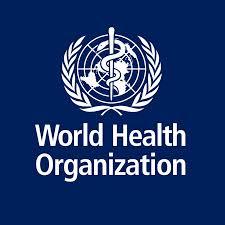
the 1980s, the World Health Organization (WHO) and the International Conference on Harmonization (ICH) played a crucial role in developing good clinical practices (GCP) guidelines as an international standard for ethical conduct in clinical trials. Canada adopted it in 2000 (5). Since then, GCP has impacted every aspect of the clinical trials community's daily activities: study design, clinical protocol, patient enrollment,monitoring,anddataanalysis.
Every physician, allied healthcare professional, and research organization employee involved in human studies adheres to these principles. Healthcare professionals and pharmaceutical employees regularly conduct mandatory training on GCP. The regulatory authorities (Health Canada) must review all human studiestoreinforcetheseguidelines(4).
TheKeyPrinciplesofGoodClinicalPracticeinclude:
1
Respect for Persons: This principle acknowledges the dignity and autonomy of individuals and protects those with diminished autonomy by obtaining informed consent from participants.
2
Beneficence: This principle obligates researchers to minimize harm and maximize benefits. Thepotentialbenefitsoftheresearchmustoutweighthepotentialrisks.
3.
Justice: This principle relates to the fair distribution of the costs and benefits of research. It oftenfocusesonensuringvulnerablepopulationsarenotexploited.
4.
5.
ScientificValidity:Theresearchmustbemethodologicallyrigorousandscientificallysound.
Favorable Risk-Benefit Ratio: The potential benefits to the participant (and society) must outweighthepotentialrisks.
7.
6. Informed Consent: Participants must be given comprehensive information about the researchandvoluntarilyconsent.
8.
Independent Review: Research must be reviewed by an independent committee, such as an InstitutionalReviewBoardorEthicsCommittee.
Respect for Enrolled Participants: Participants should have their privacy and confidentiality protectedandtherighttowithdrawfromtheresearchatanytime.
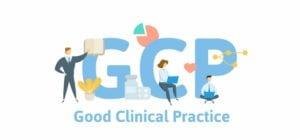
HEAL CANADA MAGAZINE - 9
evolution of patient rights in clinical trials cont'd
The
These principles profoundly impact study designs. See the two following examples involving deadly diseases such as cancer:
1) Drug developers will never test an experimental treatment in patients who could benefit from existing effective therapies. This is why they first studied new cancer treatments in patients who failed most available therapies. Only after demonstrating efficacy in this setting will the authorities allow a drug to be tested earlier in the treatment algorithms than the current standard treatments. The regulatory authorities (Health Canada) must review all human studies to reinforce these guidelines (4).
2) The study can only be designed with a placebo group if no effective treatment exists. Before participating in the study, patients will know the possibility of not receiving active treatment. However, the study's design will allow a cross-over once the new treatment is proven effective and safe. The cross-over means that if the experimental treatment shows clear clinical benefits, patients in the placebo group can switch to the treatment arms. This study designs gravelly impacts the capacity to demonstrate the survival benefits of the experimental drug. However, patients'welfarealwaysprecedestheinterestsofscienceandsociety.
It is challenging to form a clear opinion about clinical trials. In my career, I have worked on more than 20 clinical trials. If one day, I will have the opportunity to participate in a clinical trial. I will beopentoitbecauseparticipatinginaclinicaltrialprovidesseveraladvantagesforpatients: Accesstoinnovativetreatmentthreetofiveyearsbeforethepublic.
Accesstomorecompletemonitoringandcloserfollow-up
Accesstoadedicatedteamofhealthcareprofessionals:physicians,nurses,pharmacists,etc.
Also, the risk associated with experimental drugs is relatively low because several unbiased authorities monitor the situation:
Health Canada has analyzed a comprehensive set of safety data before authorizing the study to enroll human subjects. These data come from a series of studies conducted on several animals.
Health Canada will closely monitor safety during the study. The study will shut down if there are signs of toxicity. Even studies involving a pharma product are no exception. If Health Canada and the local ethics board committee approve the study, the potential clinical benefit outweighs the potential risk.
My rights and welfare will always precede the interests of science and society.
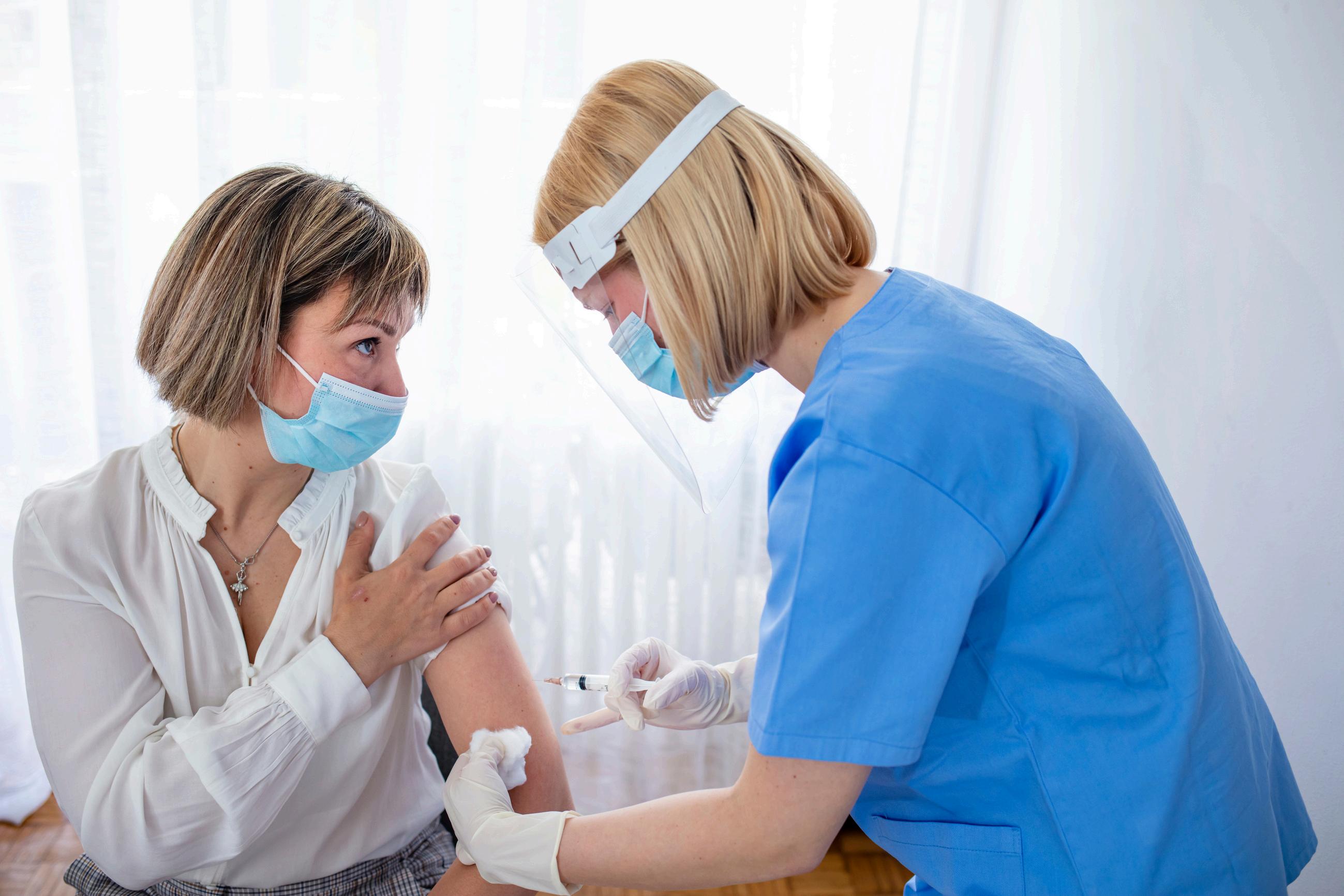
HEAL CANADA MAGAZINE -10 The evolution of patient rights in clinical trials cont'd
The Evolution of Patient-Centered Clinical Trials
by Cheryl Petruk. MBA
Clinical trials are the backbone of medical advancements, offering hope and potential breakthroughs for patients facing various health conditions. These research studies test new ways to prevent, detect, or treat diseases and are critical in determining the safety and effectiveness of new therapies, drugs, and medical devices. Yet, the success and relevance of clinical trials hinge not only on scientific rigour and innovation but also on patients' active engagement and input. In recent years, the healthcare community has increasingly recognized the indispensable role of patient input in shaping the design, conduct, and outcome of clinical trials. This perspective marks a significant shift towards more patient-centred research approaches.

Traditionally, clinical trials were designed and conducted by researchers and healthcare professionals with minimal direct input from the patients, who would ultimately be the end-users of the tested medical innovations. While scientifically sound, this approach often overlooked the practical and personal aspects of the patient experience, such as quality of life, treatment preferences, and the burden of participation. However, as the healthcare landscape evolves towards a more inclusive and patient-focused model, integrating patient input into clinical trial developmenthascometotheforefront.
TheValueofPatientInput
Patient input can significantly enhance the design and execution of clinical trials in several ways. First, it can help identify outcomes that matter most to patients, ensuring that the research focuses on questions and results that are relevant and meaningful to those affected by the condition being studied. This alignment of research objectives with patient priorities can improve theapplicabilityandimpactoftrialfindingsonpatientcare.

Second, incorporating patient perspectives can improve the practical aspects of trial design, such as selecting assessment methods, scheduling visits, and choosing comparator treatments. These considerations can make participation more feasible and less burdensome for patients, potentially increasing enrollment and reducing dropoutrates.
Third, engaging patients in the development process can enhance communication strategies to ensure trial information is understandable and accessible. This can improve informed consent processes and participant satisfaction, fostering a more transparent and trustful relationshipbetweenresearchersandparticipants.
HEAL CANADA MAGAZINE - 11
StrategiesforIntegratingPatientInput
Several strategies can be employed at different stages of clinical trial development to harness the benefitsofpatientinput.Theseinclude:
Patient Advisory Panels: Establishing panels or councils composed of patients, caregivers, andadvocatescanprovideongoinginputandguidancethroughoutthetrialprocess.
Patient Engagement in Protocol Design: Involving patients in the early stages of trial design canhelpensurethatstudyprotocolsreflectpatientneedsandpreferences.
Patient-Reported Outcomes (PROs): Incorporating PROs as key endpoints in trials can capturethepatient'sperspectiveonsymptoms,treatmentsideeffects,andqualityoflife.
FeedbackSurveysandFocusGroups:Conducting surveysandfocusgroupswithpatientscan gather insights on various aspects of trial design and conduct, including recruitment strategiesandcommunicationmaterials.
ChallengesandConsiderations
While integrating patient input into clinical trials offers substantial benefits, it also presents challenges. These include ensuring the representativeness of patient contributors, balancing scientific rigour with patient preferences, and addressing the logistical and financial implications of patient engagement activities. Furthermore, the healthcare community must work to overcome cultural and institutional barriers that may hinder the full integration of patient perspectives into research.
TheFutureofPatient-CenteredClinicalTrials
The future of clinical trials lies in further embracing and institutionalizing patient-centred research approaches. This involves continuing to refine methods for engaging patients and fostering a research culture that values and prioritizes patient input. Regulatory bodies, research institutions, and funding agencies are critical in promoting patient-centred practices by setting guidelines,providingresources,andincentivizingpatientengagementinclinicalresearch.
Including patient input in developing clinical trials represents a paradigm shift towards more patient-centred healthcare. By ensuring that research addresses patients' needs, preferences, and experiences, the scientific community can enhance clinical trials' relevance, quality, and impact. This collaborative approach has the potential to accelerate medical innovations and ensure that these advancements genuinely meet the needs of those they are intended to serve. Integrating patient perspectives into clinical research will undoubtedly be a cornerstone of ethical,effective,andcompassionatecareasthehealthcarelandscapeevolves.
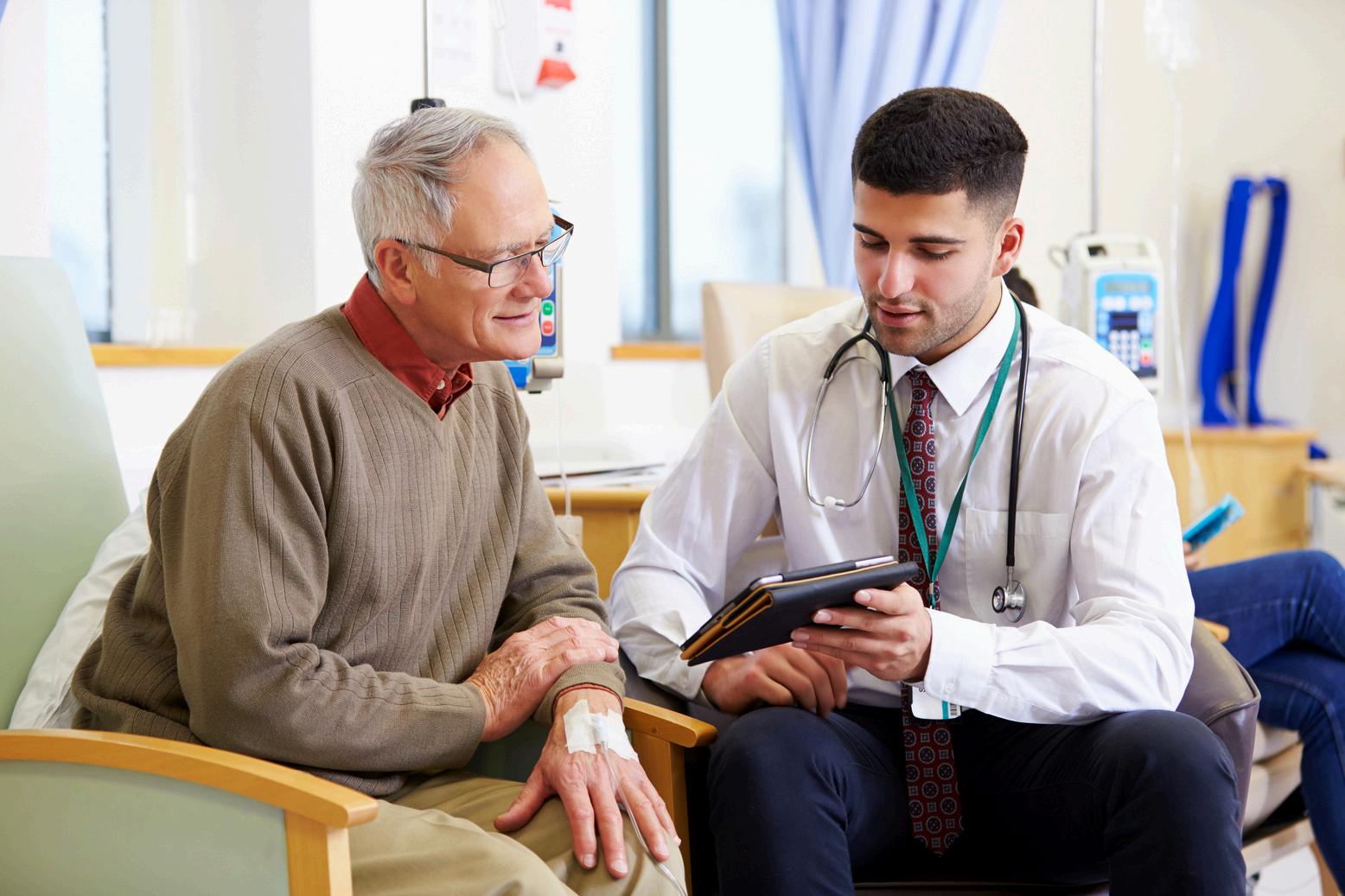
HEAL CANADA MAGAZINE -12 The Evolution of Patient-Centered Clinical Trials cont'd
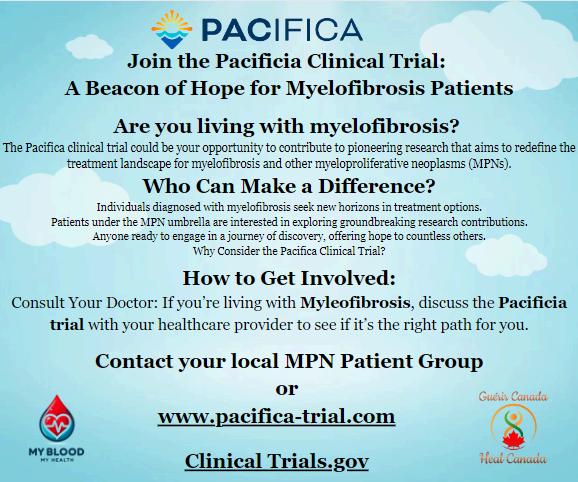
HEAL CANADA MAGAZINE - 13
A Patient-Centered Approach to Clinical Trials: The Benefits of Engaging Patients and Patient Groups
by Iris Karry
Engaging patients in research has become a priority for clinical researchers to improve the relevance and impact of clinical trials. Furthermore, faced with the growing demand for patient experience data, both patients and patient groups* must become involved in clinical research as earlyaspossible.
Like researchers, patients and patient groups are vested in reducing disease burden and improving patient outcomes. Patients have in-depth insights into what it means to live with a disease and undergo treatment. They are experts in the needs of patient communities important treatmentfortheirdisease
Table 1: Summary of benefits for early patients involvment in clinical research
Clearer, more focused understanding of unmet need and therapeutic burden
For Trial Sponsors (Pharma)
For patients
Awareness of opportunity for expanding indications and more appropriate targets
Improved clinical trial design, selection of optimum study participants, endpoints, and clinical sites
Faster trial recruitement and greater partient compliance with the protocol
Fewer costly and time-consuming adjustments during the clinical trial
Less burdensome study protocols
More meaningful and relevant study endpoints
Increased likelihood of participation and retention in cancer clinical trials
Increased chance of developing an important treatment for their disease
Source: Batist G et al. Developing a Model of a Patient-Group Pathway to accessing Cancer Trials in Canada, Current Oncology. 2018;25(6):597609
Whatispatientengagement?
Patient engagement is defined as “the active, meaningful and collaborative interaction between patients and researchers across all stages of the research process, where research decisionmaking is guided by patients’ contributions as partners, recognizing their specific experiences, values and expertise” (International Society for Health Economics and Outcomes Research). Patients engaged in research, sometimes referred to as patient partners, can contribute at many levels, including priority setting, knowledge translation, and long-term data retention, including patientvaluesandpreferences.
*a term encompassing patient advocacy organizations, disease advocacy organizations, voluntary health agencies, health charities, nonprofit research foundations, and public health organizations
HEAL CANADA MAGAZINE - 14
1
. Colorectal Cancer Canada (CCC) is a Canadian non-profit patient-led organization dedicated to awareness and education of colorectal cancer, supporting patients and their families and advocating on their behalf. We believe that patient groups can play a critical role by facilitating the patient voiceandbyorganizingtheinvolvementofpatientsinresearchinasystematic way,ensuringconsistencyandqualitythroughouttheprocess.

2 . Patient groups can support patient partners engaged in clinical research, provide valuable insightstohelpguideandfurthertheresearchandretainlong-termpatientexperiencedata.This includesbutisnotlimitedto,patient-reportedoutcomesandexperiences,whichcanbeutilized toinformhealthcaredecision-makers Byworkinghandinhandwithpatientgroups,patientscan inform both industry and academic trials and elicit patient preferences that may impact both regulatory approval of drugs and health technology assessment (HTA) recommendations HTA agencies evaluate the effectiveness and properties of drugs and medical devices and inform decisionmakinginhealthcare.
Furthermore, while patient engagement is increasingly required for research funding, a grant applications, the employment of the patient group as a collaborator can help avoid tokenism and ensurethatthepatient’svoiceismeaningfullyengaged.
In 2017, CCC held its first annual Clinical Trials Conference and achieved a consensus to develop a Canadian version of the U.S. Duke University’s Clinical Trials Transformation Initiative (CTTI) model. Considering the Canadian environment, our working group and meeting participants established a comprehensive framework for patient group engagement in cancer clinical trials. They developed the Canadian Patient Group Pathway Model to Accessing Cancer Clinical Trials (“Model”), which provides recommendations to clinical trial stakeholders, including the trial sponsor, the researcher, and the patient group, to enhance patient and patient group integration into the clinical research process. The 2018 Clinical Trials Conference attendees developed a Canadian Cancer Clinical Trials Stakeholder Charter (referred to hereafter as the “Charter”) to operationalize the Model and support stakeholder engagement with patients and patient groups inclinicaltrials.(1,2)
Led by a Steering Committee of senior stakeholders from across the Canadian clinical trial ecosystem, the Patient-Centered Approach to Clinical Trials (PACT) initiative was born. As part of this initiative, a demonstration project is being developed. We aim to identify the benefits of the Model and Charter in supporting patient and patient group involvement in clinical research and theircontributiontofosteringmorepatient-centredcare.
Throughout this collaborative process, our research team will document each engagement step between the patient group, patient, and researcher and describe how the frameworks can be feasiblyimplementedinareal-worldsetting.
Patient and patient group engagement in clinical research is increasingly important to better inform researchers, regulators, HTA and healthcare providers. The meaningful engagement of patient and patient groups in clinical trials must be further developed if we are to ensure more relevant and impactful patient-centered clinical trials that truly address the needs of patients in Canada.
Iris Karry is the Patient Education and Research Manager at Colorectal Cancer Canada and Program Manager of the Patient-Centered Approach to Clinical Trials (PACT) initiative. For more information, you can contact her at irisk@colorectalcancercanada.com
A Patient-Centered
to Clinical Trials: The Benefits of Engaging Patients and Patient Groups cont'd HEAL CANADA MAGAZINE - 15
Approach

HEAL CANADA MAGAZINE -16


Patient Advocacy Training contact: Info@CACHEducation.org HEAL CANADA MAGAZINE - 17

First Cohort Completion Marks Milestone for CACHEducation
CACHEducation,anot-for-profitorganizationdesignedtoprovidein-depthandongoingtraining forpatientadvocates,hasconcludeditsfirstcohortforitsLevel1class,IntroductiontoPatient AdvocacyinCanada.
Thethree-monthsemesterconsistedof8one-hourlessons,whichintroduced25students acrossNorthAmericatovarioustopicsnecessarytobeawell-roundedpatientadvocate,with specificlearningobjectivesforeachclass.(seeTable1)Eachlessonwaspresentedlivetoallow studentstoactivelyparticipateandinteractwiththeinstructor,CherylPetruk,awellestablishedcollegeprofessorandaleaderinpatientadvocacy,andotherlearners.
SimilartoclassesconductedatcollegesthroughoutCanada,thissemester,CACHEducation utilizedMoodleandZoom,aswellasotherprogramstoensurethatthestudentshadample opportunitytointeractwiththeclass,doquizzes,keeptrackoftheirprogress,andaccessall slidesandreferencesusedinthelessons.
Thelessonswererecordedandmadeavailabletoenrolledstudentsthroughasecurelink.To receiveacertificateofcompletion,thestudenthadtoreceiveapassinggrade(65%)onthefinal exam,demonstratingawell-developedunderstandingofthecoursecontentanditspractical application.
HEAL CANADA MAGAZINE -18
Level1:IntroductiontoPatientAdvocacyinCanada, lessonbreakdown and learningobjectives
1Whatisthepatientadvocacy

Explainhowpatientadvocacydiffersbasedonreachnationalvs.global)anditsroles.
Explainthedifferencebetweenpatientempowerment,education,andengagement.
DescribethechallengesfacingpatientadvocacygroupsinCanada.
DescribetheopportunitiesforpatientadvocacygroupsinCanada.
2Startingapatientadvocacygroup
Attheendofthismodule,thestudentwillunderstand:
The“why”ofstartingapatientadvocacygroup
Theimportanceofconductingresearchandpreparationwork
Theimportanceofdefiningamissionandgoalsforyourgroup
Theneedtodevelopaplanofaction
Howtoidentifyfundingsources
Thereisaneedforrecruitmentstrategiesformembersandvolunteers,grouppartnerships, keepingthemissionandvisionattheforefront,andcontinuousevaluation.
3IntroductiontotheCanadianhealthcaresystem
UnderstandthefundamentalsoftheCanadianHealthcareSystem,includinghowitappliesto Canadiancitizensanditshistory.
DrawconnectionstothevarioussystemswithintheCanadianHealthcareSystemandthe servicesprovided.
DescribetheFederalandProvincialroleswithintheCanadianHealthcareSystem.
4Communications:websitedesignandsocialmedia
Explainwhygoodonlinecommunicationisvital.
Explaindifferentaudiencesapatientadvocatemighttargettheircontenttowardsandhow. Describesomeofthebasicsofwebsitedesign.
5Drugdevelopment:introduction
Explainhowthebodybehavesinanormalvsinadiseasedstate.
Explainthestepsindevelopingamedicationfromdiscoverytodistribution. Explaintheroleadvocacygroupscanhaveinthedrugdevelopmentprocess.
6Clinicaltrials:introduction
Explainwhathappensateachphaseofaclinicaltrial.
Explainthedifferenttypesofclinicaltrials.
Definethecommonterminologyusedinclinicaltrials.
7Treatment0ptions:introduction
Describethedifferencebetweentreatingsymptomsandtreatingthedisease.
Describestandardtreatmentoptions(medicalfoods,medicaldevices,genericmedication, targetedtherapy,ERT,genetherapy).
Describeissuesassociatedwithstandardtreatmentoptions.
HEAL CANADA MAGAZINE - 19 First Cohort Completion Marks Milestone for CACHEducation cont'd
8Reviewandexam.
Attheendof thesemester,studentswereencouragedtoparticipateinasurvey wherethey could providefeedback onthecoursecontentanditsapplicability,theinstructor,theformat,andthe likelihoodof registering forCACHEducation’sadvancedclassesinthefuture Thesurvey results wereoverwhelmingly positive,withall respondentsagreeing (25%) orstrongly agreeing (75%) that thecourseprovidedvaluableinformationthey couldapply asapatientadvocate.Similar responseswereseenwhenaskedif theinstructorwasknowledgeableandeffectiveindelivering thelearning material,if participantsplannedtosharewhatthey learnedwiththeircolleagues,and if theliveformatof thecourseaddedtothevalueof thecontent.All participantseitheragreedor strongly agreedthatthecourseprovidedthem withinformationthey didnotknowaboutpatient advocacy inCanada.
Excitedly,75%of participantsresponded“very likely” toenrolling infutureCACHEducation courses.Overall,thisresponsefrom thefirstcohortdemonstratesadesireandneedamong patientadvocatesforsimilartraining programs.
CACHEducationiscommittedtobuilding onthismomentum andexpanding itstraining optionsto meettheevolving needsof patientadvocatesacrossCanada Plansforfutureprogramsinclude advancedcourses,thefirstcohortcoming inLate2024,specializedworkshops,short-form education,andmore FormoreinformationaboutCACHEducationandupcomingtraining

programs,visit www.cacheducation.org First Cohort Completion Marks Milestone for CACHEducation cont'd HEAL CANADA MAGAZINE - 20

www.cllcanada.org HEAL CANADA MAGAZINE - 21
Emerging Treatments
 Brigitte Leonard, PhD. Chief Scientific Officer, Heal Canada
Brigitte Leonard, PhD. Chief Scientific Officer, Heal Canada
New treatments offer hope to patients and their loved ones. Here, we present new therapies that are available to Canadians.
This section also addresses challenges around access to new medication. Our readers will find important information here to help them understand Canada's drug review processes.
An informed and engaged patient is an empowered one. We aim to equip our readers with the tools and knowledge to navigate the complex healthcare landscape because, more than ever, patients need to raise their voices, to get access to services. Accessing innovative medicines can save patients' lives.
HowarenewtreatmentsreimbursedinCanada?
by BrigitteLeonard, Ph.D
There are growing concerns about access to innovative treatments in Canada. Several medications approved by the FDA in the USA weren't submitted to Health Canada for commercialization, and this has become a growing trend. Pharmaceutical companies are still offering their products to Canadians; however, smaller biotech's need more capital to invest in treatments for Canadians. So, their products will only reach the Canadian market if another company picks them up as a distributor. Why is Canada experiencing this decertification of patentedmedicines?
The patent system is pivotal in fostering innovation and propelling economic development. By granting exclusive rights for a limited period, inventors can recoup their research & development costs and investments. This concept is so fundamental that it traces its roots back to Ancient Greece, where some patent rights were recognized. In Canada, this system was formalized with the implementation of Canada's Patent Act in 1869, underscoring its significance in the country's innovationlandscape.
Patent grant exclusivity is for 20 years. Developing drugs for humans can be a long process. It takes roughly ten to fifteen years to finalize the clinical development and to get commercialization rights, leaving less than ten years to recuperate the R&D and commercialization costs and provide some return to their investors. Drug developers benefit from 8 years of market exclusivity if Health Canada approves their products. However, the actual commercialization window is affected by an additional mandatory review processes imposed on drug developers (Figure 1). These additional review processes significantly impact Canada's attractivenessasamarketanddiscouragecompanieswithlesscapitalorforrarediseasesdrugs.
HEAL CANADA MAGAZINE - 23
Drug Patent - approximative 20 years Pre-Clinial Phase (~6.5y) Clinial (~7y) Regulatory review (~1.5y) Exclusive Commercialization window (~8-10y)
drug development and commercialization process Canadian Drug development and commercialization process Drug Patent - approximative 20 years Pre-Clinial Phase (~6.5y) Clinial (~7y) Health Canada Review (~1.5y) Exclusive Commercialization window (~ < 6 y) National & Provincial Review ~ 2-2.5 y
Figure 1: Typical
HownewmedicationsareapprovedinCanada?(con’t)
Whatisthenationalandprovincialreview?
Three different authorities conduct evaluations during the national and provincial reviews process. (Figure 2). The many issues from the pandemic have delayed the assessment of several dossiers.
Figure2:Nationalandprovincialdrugreviewprocess
The role of CADTH is to provide recommendations regarding the clinical and economic values of new medicines approved by Health Canada. CADTH developed several initiatives to improve the review timeline and the transparency of their processes. The latest campaign, "Target Zero," was launched this past April. However, significant delays in the later stages of the public reimbursement process create barriers to access and inequity across Canada. The second review step is pCPA, a pan-Canadian pricing alliance, that negotiates prices and rebates with drug developers. This step can take more than 12 months. The third and last step is the review by each province. This process varies for each drug and each province, but it would be fair to say that patients have lost another year there int he approval process. See Table 1 for an example of provincesdisparityintermsofaccess(listing).
Table 1: Examples of differences in time to listing for oncology products (1)
(acute myeloid leukemia)
listed as Nov 2023
These policies continue to impact primarily rare diseases, despite the federal commitment of 1.5 billion over three years to increase access to effective drugs. Access to breakthrough drugs should be allowed as soon as Health Canada says they are safe and effective, as in other countries(2).Inthemeantime,let'sadvocateforbetteraccess.
CADTH/ INESSS (Qc) ~6 months pCPA > 12 months Individual Provinces >12 months Product (Indications) Ontario Alberta Gemtuzumab
460 days Not
Palbociclib
240 days 160 days Crizotinib (ROS1+ advanced non-small cell lung cancer) 259 days 132 days HEAL CANADA MAGAZINE - 24
(locally advanced/metastatic breast cancer)

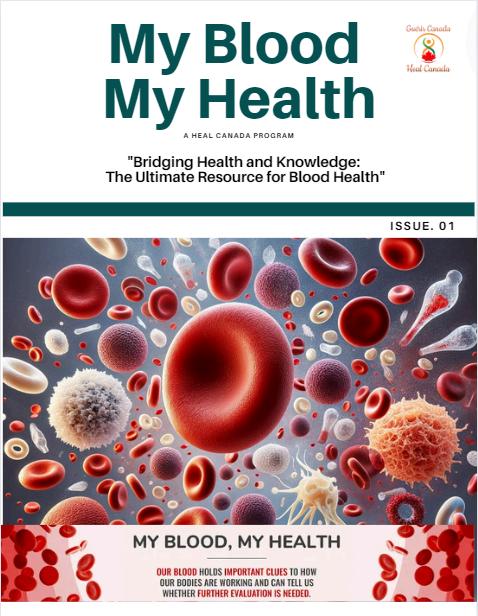
Watch our website for the My Blood My Health digital publication mybloodmyhealth.ca monsangmasante.ca HEAL CANADA MAGAZINE -25
HealthCanada2024Approvals...sofar!
byBrigitte Leonard, Ph.D
According to the Health Canada database, the agency approved five new products for commercializationinthefirstquarteroftheyear.
Trade Name
Medicinal
Jubbonti Denosumab
Myalepta Metreleptin
Truqap Capivastertib
VELSIPITY
Etrasimod Larginine
XENPOZYME Olipudase alfa
Sandoz
Medison
AstraZeneca
Pfizer
Sanofi
Osteroporosis (Biosimilar Prolia)
Lipodystrophy generalized or partial
HR+/HER2-Advanced or metastatic Breast Cancer
Ulcerative colitis
Acid Sphingomyelinase Deficiency (ASMD)
Jubbonti is a biosimilar of Prolia, a well-known antibody directed against the RANK ligand (bone metabolism regulator). It was approved in 2010 to treat osteoporosis and increase bone mass in somecancers(1).
Approved in February 2024, MYALEPTA became the first and only treatment available to treat lipodystrophy, a life-treating ultra-rare genetic disorder characterized by complete or partial absence of fat tissue (2). Diagnosing lipodystrophy can be complex because less than 200 Canadians could be afflicted, and the clinical presentation varies greatly depending on the mutations involved. In these patients, lack of fat tissue impacts the leptin production, a hormone crucial in regulating hunger and energy balance. They develop several complications, such as severe insulin resistance (diabetes), hypertriglyceridemia, renal failure, and cardiovascular disease at a very young age (3). Myalepta is a leptin replacement therapy that addresses the central issue of this syndrome with a meaningful reduction of blood sugar markersandtriglyceridesinheavilypre-treatedpatients(4).
Ingredient Canadian Distributor Targeted Disease
HEAL CANADA MAGAZINE - 26
Breast cancer is the most common cancer and one of the leading causes of cancer-related death worldwide (5). Truqap is approved for patients with advanced or metastatic breast cancer who failed 1st line of treatment. The treatment is proposed for breast cancer with a specific molecular signature: HR+HER2- and one of the PIK3CA/AKT1/PTEN-alterations (6). Patients harbouring this type of breast cancer fail current treatments often due to resistance development. Truqap provides a much-needed new treatment option for up to half of patients in this setting, potentially delaying disease progression and providing more time with their disease under control.


Ulcerative colitis (UC) is a chronic inflammatory bowel disease with debilitating symptoms such as chronic diarrhea with blood and mucus, abdominal pain, and urgency (7). VELSIPITY is indicated for the treatment of moderate to severe active ulcerative colitis with inadequate response to either conventional therapy or advanced treatment. VELSIPITY is an oral, once-daily, selective sphingosine-1phosphate (S1P) receptor modulator that reduces the level of immune cells in the gastrointestinal tract. The approval is based on two phase 3 trials, ELEVATE UC 52 and ELEVATE UC 12, where a significantly greater proportion of patients in the treatment group achieved clinical remission compared with patients in the placebo group with an adequate safety profile (7).
Acid sphingomyelinase deficiency (ASMD) is a rare genetic disorder caused by a deficiency of the enzyme acid sphingomyelinase. This enzyme is essential for breaking down a fatty substance called sphingomyelin. ASMD exists on a spectrum, with severe to milder neurodegenerative forms. Accumulation of sphingomyelin in cells can cause harm to the lungs, spleen, and liver, as well as other organs, potentially leading to early death (8). XENPOZYME is an enzyme replacement therapy indicated for long-term treatment of non-central nervous system (CNS) manifestations of acid sphingomyelinase deficiency (ASMD) in pediatric and adult patients. The approval was based on two randomized trials, ASCEND and ASCEND-Peds, where XENPOZYME demonstrated meaningful improvement of the lung and the spleen with a good safety profile (9).

HEAL CANADA MAGAZINE - 27

Canadian MPN Network Patient Advocacy and Education Group Providing MPN Patients Support and Education Info@canadianmpnnetwork.ca HEAL CANADA MAGAZINE -28
CADTH Call for Patient Input
by Brigitte Leonard, Ph.D
CADTH seeks patients' perspectives to improve the quality of their assessments. Patients, families, and communities can offer insight into the diversity of individual needs and healthcare settings across Canada. CADTH's recommendations on publicly funded devices, procedures, and drugs impact Canadian patients. Patients and the public to be aware of and involved in the opportunity for contributing to the approval process.
Patients are encouraged to share their experiences for the upcoming approvals:
Non-Oncology Drugs
ferric carboxymaltose (Ferinject)
Iron deficiency in adult patients with heart failure
May-27-24
exagamglogene autotemcel Sickle cell disease (SCD) May-13-24
exagamglogene autotemcel
rozanolixizumab
ferric carboxymaltose (TBC)
Transfusion-dependent βthalassemia May-13-24
Generalized myasthenia gravis (gMG) May-13-24
Iron deficiency anemia
May-07-24 sotatercept (TBC)
Pulmonary arterial hypertension (WHO group 1) Apr-22-24 eplontersen (TBC)
Polyneuropathy in hereditary transthyretin-mediated amyloidosis Apr-22-24
Product Disease Sumission deadline
HEAL CANADA MAGAZINE - 29
CADTH Call for Patient Input (con’t)
Oncology Drugs
lisocabtagene maraleucel (Breyanzi)
Relapsed or refractory large Bcell lymphoma May-21-24
talquetamab (TBC)
Relapsed or refractory multiple myeloma May-13-24
avapritinib (TBC) Advanced Systemic Mastocytosis May-07-24
ciltacabtagene
autoleucel (Carvykti)
Relapsed or refractory multiple myeloma Apr-30-24
alectinib (Alecensaro) ALK-positive NSCLC Apr-30-24
leniolisib (TBC) Activated phosphoinositide 3 kinase delta syndrome Apr-30-24
Patients or Patient Advocates wishing to participate in the CADTH approval process, please visit www.CADTH.ca
Sumission deadline
Product Disease
HEAL CANADA MAGAZINE - 30


Subscribe to receive your digital copy of Heal Canada visit www.healcanada.org Let us know what you think!
Fundraising for your mission and create awareness for your organization? contact Heal Canada for more information about how your group can raise funds for your mission and create awareness CONTACT HEAL CANADA TO ASSIST YOUR ORGANIZATION IN HELPING GROW AWARENESS AND RAISE VALUABLE DOLLARS FOR YOUR MISSION ADMIN@HEALCANADA.ORG HEAL CANADA MAGAZINE - 31
Experiential

Belonging, Diversity, Inclusion and Equity
Welcome to the Belonging, Diversity, Inclusion and Equity section of Heal Canada's Digital Magazine. In this section, we provide information focusing on ensuring that BDEI is part of the patient conversation in our Health ecosystem. Our focus is to illuminate the pathways through which individuals grappling with health challenges can not only find their voice but also harness it to drive their own journey.
Healthcare and the patient experiences should not be determined on social determinants of health.
We believe that an informed and engaged patient is an empowered one, and through enlightening articles, expert insights, and inspiring stories, we aim to equip our readers with the tools and knowledge necessary to navigate the complex landscape of health care.
Areclinicaltrialsdiverse,inclusive,
andequitable?
byBrigitte Leonard, Ph.D.
WHO Clinical Trial Portal reported 744,100 clinical trials registered in 2022 compared to 2408 in 1999. Steady growth has been observed since the registry's initiation. During the last ten years, a 13%annualgrowthinregistrationwasobserved(1).

This high level of activity benefits patients across the world. However, some racial and ethnic communities are underrepresented, potentially impacting the clinical outcome of these communities. With a low representativity of these communities, it is impossible to conduct subanalysistodetermineifthetreatmentisaseffectiveandsafeasinWhitepatientpopulations.
Several factors might explain this disparity. Historical abuses are the first that came to mind. Sadly, there is a long history of racism in health research, illustrated by infamous unethical studies like the Tuskegee Syphilis Study and Canadian studies of Indigenous children in residential schools(2,3). Adopting policies to protect the participants' rights may not be enough toeradicatethiscollectivetraumathathasbeenlivedformanygenerations.
There are also more logistic barriers to participating in a clinical trial for some communities, often associatedwithlowerincomes.
Maybe clinical trials are offered less often to members of these communities because the study requires more involvement from the patient, such as increased frequency of study visits, time and resource constraints for participants, transportation, and participation conflicting with caregiverorfamilyresponsibilities.
To increase awareness of this critical issue in the medical community and the public, the FDA promotes National Minority Health Month every April to reduce this disparity (4). One of the key events in 2024 is a panel discussion titled “Strategies to Increase Clinical Trial Participation for Diverse Communities” scheduled for April 17th. This discussion will feature members of the Racial and Ethnic Minority Acceleration Consortium for Health Equity (REACH), discussing their ongoing work to improve clinical trial participation among racial and ethnic minorities in rural, urban,andothercommunitiestheyserve.
HEAL CANADA MAGAZINE - 33
This trend is evident in big medical conferences, where dedicated sessions address this issue. Moreover, the number of studies addressing treatment effectiveness per racial and ethnic group is exploding. Most studies analyzing this aspect are Real-World and observational studies, which havedoubledsince2020.
Despite these efforts, much must be done to achieve racial and ethnic equity in clinical trials. It’s crucial to continue addressing these disparities to ensure that medical research is representative andbenefitsallpopulations.


for more information how LCA can help you info@latinxcanceralliance.org
HEAL CANADA MAGAZINE - 34
Five Ways to Increase Diversity in Your Patient Advocacy Group
by Victoria Radke
Diversity efforts are essential for all patient advocacy groups as they create a space for patients that is more inclusive, representative, an innovative. Additionally, increased diversity provides a more holistic view of the disease/disease area the patient group is serving, allowing them to understand better and address the uniqueneedsoftheircommunity.
However, despite good intentions, many advocacy groups often struggle with diversity and inclusion due to systemic biases, limited resources, or the fact that some diseases disproportionately affect specific demographic groups. To address this, we have highlighted the following strategies to enhance diversity in patient advocacy groups:

Five Strategies for Increasing Diversity and Inclusion: Reach Out to Underrepresented Communities: Actively reach out to individuals from known underrepresented communities affected by the condition your group represents. This may involve collaborating with community organizations, healthcare providers, or online support networks that cater to specific demographic groups. Additionally, it can help forge partnerships with organizations and stakeholders that have expertise in serving specific demographic groups, amplifying the advocacy group's reach and impact in other communities.

Language Accessibility: Increase the number of services and resources available in languages other than English In Canada, there is a push to encourage non-governmental organizations to provide resources and services available in English and French. According to the most recent data, over 200 languages are spoken in Canada. Some ways to increase language diversity include translating critical materials, ensuring culturally sensitive material, and offering interpretation services during meetings or events.
HEAL CANADA MAGAZINE - 35
Five Ways to Increase Diversity in Your Patient Advocacy Group cont'd
Diversify Your Support Services: It is essential to recognize that individuals from diverse backgrounds may have different needs and preferences regarding support services. Diversifying your support services broadens the range of resources and assistance available to your patient community. Some ways to do this are offering different types of support (e.g., financial, emotional, informational, etc.) and providing support through multiple mediums (e.g., phone, email, in-person, etc.).
Increase Representation in Leadership and Board Membership: One of the most straightforward ways to demonstrate your group’s commitment to inclusion is to encourage diversity in the leadership. By actively recruiting individuals from underrepresented communities to serve on the board or in other leadership roles, you can promote decision-making processes that reflect the diversity of your group’s members.
Frequent Feedback and Evaluation: To get a clearer picture of how your community feels about the representation within your group, it is important to solicit feedback from members regularly. This can identify areas for improvement and suggest improvements. Creating ongoing evaluation and accountability mechanisms is crucial to ensuring that diversity remains prioritized within the organization.
By taking these proactive steps, even the smallest patient advocacy group can create a more diverse and inclusive community that supports individuals from all backgrounds affected by the disease. Embracing diversity enriches the collective experience and strengthens the group's ability to advocate for equitable access to care, resources, and support for all members of the rare disease community.

HEAL CANADA MAGAZINE - 36


Heal Canada and Pat ADV Hub in the USA have embarked on a collaborative journey, aiming to revolutionize the realm of patient advocacy across North America. This pioneering partnership brings together two influential organizations from neighboring countries, combining their extensiveexpertiseandresources.
The objective is to expand and enhance the access to critical information for patient advocates, ensuring that individuals across the continent receive the best possible support and guidance in theirhealthcarejourneys.
By bridging the gap between Canadian and American healthcare advocacy, this alliance promises to foster a more informed, empowered, and connected community of patient advocates, significantly contributing to the improvement of healthcare experiences for countlessindividuals.
email: patadvhub@gmail.com

www.patadvhub.org
HEAL CANADA MAGAZINE - 37
Mental Health
Welcome to the Mental Health section of Heal Canada Digital Magazine, a dedicated space where we embrace the journey towards mental wellness with open arms and open hearts. In this edition, we delve into the empowering world of patient advocacy, engagement, empowerment, and education. Our focus is to illuminate the pathways through which individuals grappling with mental health challenges can not only find their voice but also harnest it to drive their own journey.
We believe than an informed and engaged patient is an empowered one and through enlighteninig articles, expert insights, and insipiring stories, we aim to equip our readers with the tools and knowledge necessary to navigate the complex landscape of mental health care.
Join us as we explore how patient advocacy, active engagement and comprehensive education can transform the experience of mental health care, turning obstacles into opportunities for growth and healing.
Spring cleaning tips for mental health Wellness
by Wendy Reichental

Take a slow, deep breath and exhale. Spring is finally here. It brings with it a fresh surge of hope, renewal and growth. This transition to Earth’s awakening is an optimal time for shaking off the old and embracing new beginnings.
Much like the instinct to embark on spring cleaning our homes and living spaces, Spring prompts us to embark on a journey of inner renewal and overallphysicalwell-being.
HereAreSomeBeneficialPracticestoHelpFacilitateYourMentalHealthSpringCleaning: Practice Mindfulness and Renew Your Spirit: Participate in practices such as yoga, incorporating mindfulness meditation to bring awareness to your thoughts and feelings, which can help you observe your mental clutter without getting caught up in it. Research studies on the power of meditation have reported a significant reduction in negative thoughts and energy when engaging in activities that encourage deep breathing and self-awareness. Research has demonstrated that merely 5-10 minutes of controlled breathing can soothe the body's nervous system, reducing stress levels and enhancing focus and clarity, allowing you to approach life with greater calmness andresilience.
Don’t Put Off Projects: To-do lists are a great way to improve your mental clarity by helping you organize your thoughts, prioritize tasks, and focus your attention and energy on what needs to be done, which might prevent you from feeling overwhelmed. Write down all the things you’ve been putting off, like decluttering your home, storing away those winter clothes, changing your décor, getting those maintenance repairs done, or making those necessary appointments with your dentist or doctor. Take the initiative to tackle those lingering tasks that have been weighing on your mind and commit to taking action to address them.
Another bonus of creating to-do lists is that crossing items off a list eventually provides a sense of accomplishment and progress. This can be a natural energy booster and an improving mindset.
A Simple Stretch or Stroll Brightens Mood: The winter blues can linger into spring and leave you feeling blah even on the sunniest days. Try reaching for the sky with an easy arm stretch to restore your energy. Simply intertwine your fingers and stretch your arms high over your head until you feel a pull in your chest and shoulders. Hold for 30 seconds. Doing various stretches for just 5 minutes twice daily can eliminate sluggishness and kick-start the production of those feel-good hormones.
HEAL CANADA MAGAZINE - 39
Spring Cleaning Tips for Mental Health Wellness cont'd
If you want to increase the possibility of getting further relief from the blues and reduce stress, engage in some physical activity, like a daily stroll. Spending 20 minutes daily strolling around your neighborhood can reenergize your soul, boost cognitive function, and strengthen your immune system. Jennifer Walsh, the author of Walk Your Way Calm: A Guided Journal for Uncluttering Your Mind with Every Step, explains that regular exercise triggers the release of feelgood endorphins, which research has shown can help alleviate depression and anxiety. Walking also helps you get unstuck from your thoughts. Taking care of your physical health benefits your mental health.
Minimize Your Exposure to Negative Influences: Reduce exposure to devices and electronics and constant negative news, social media, or people who bring you down. Surround yourself with positivity and uplifting content instead. Sometimes, we stand in our way and are our worst enemies. Our attitude, motivation, and potential may be due to a lack of confidence. Swap out negative self-talk and selfcriticizing with positive affirmations or phrases like “I’m doing my best.” -find your inspiring mantra and try to remind yourself that life is about progress, not perfection.
Embrace Imperfection: Accept that you're not perfect and that it's okay to make mistakes. Let go of unrealistic expectations and be kind to yourself as you navigate life's ups and downs. Instead of focusing on issues or situations that make you angry that you cannot change or solve, look to the moments of progress and joy instead. Let go of resentment, anger, or grudges weighing you down. Practice forgiveness towards yourself and others to free yourself from negative emotions.

Know your limits; Set Boundaries: Establish boundaries around your time and energy to protect your mental well-being. Learn to say no to commitments or activities that drain you or cause unnecessarystress.
Find a Creative Outlet or Pick up a New Hobby: Creative activities stimulate different brain parts and allow for self-expression, problem-solving, and exploration of new ideas. They can also serve as a form of relaxation and stress relief, helping to soothe the mind and promote mental wellbeing. Moreover, pursuing a hobby or creative outlet can introduce you to new experiences, skills, and communities. It offers an opportunity to step out of your comfort zone, challenge yourself, and discover hidden talents or passions. Whether you engage in a solo activity or join a group or class,carvingouttimeforcreativepursuitscancontributetofeelingmorebalancedandfulfilled.
HEAL CANADA MAGAZINE - 40
Spring Cleaning Tips for Mental Health Wellness cont'd
What Are You Thankful For?: One great way to promote a healthy mind is to take some time to consider everything for which you are grateful. Cultivating a mindset of gratitude by regularly reflecting on the things you're thankful for can help shift your focus from what's going wrong to what'sgoingrightinyourlife.
Consider Going Green: Norwegian researchers report that spending a bit of time caring for houseplants can improve your focus because connecting with nature prompts the release of beta waves. Indoor gardening produces the same energy boost as tending to an outdoor garden. So, what are you waiting for? Go to your nearest garden center and pick up a Boston fern. They will lift yourspirits,andfernsareexcellentairpurifiers,removingcommonindoorpollutants.
TheTakeaway
Spring cleaning allows us to rejuvenate and refresh our physical spaces and nurture our minds, promotingmentalstrengthandasenseofbalanceforoverallwell-being. Self-care is not selfish; grant yourself permission to practice self-compassion and be kind to yourself.
It’s normal to have a busy mind, and if you find yourself grappling with challenging emotions, it's alsookaytoreachoutforhelp.
Reaching out for support is a sign of strength, not weakness. Taking proactive steps to address your emotional well-being is essential to nurturing yourself and staying healthy so you can enjoy thebeautyoftheseasonforyearstocome.
“Whereveryougo,nomatterwhattheweather,alwaysbringyourownsunshine.”by AnthonyJ. D’Angelo

HEAL CANADA MAGAZINE - 41
Embracing Green Therapy: The Therapeutic Benefits of Nature in Mental Health Treatment.
by Janice D’souza, M.S.W., R.S.W.
In a world often characterized by constant hustle and bustle, where stress lurks around every corner, finding solace in nature can be a breath of fresh air. Much research has shown that nature has numerous mental health and well-being benefits. The therapeutic benefits of nature have long been recognized, but only recently have mental health professionals begun to fully embrace and integrate outdoor activities into treatment plans for various mental health conditions. This shift marks a profound recognition of the profound impact that spending time in nature can have on our mental well-being.

As the seasons transition into spring, with its blossoming flowers, warmer temperatures, and longer days, there's no better time to explore the therapeutic potential of the great outdoors. This is when we truly embrace ‘green therapy.’ From serene forests to sprawling meadows and tranquil bodies of water, nature offers a sanctuary for those seeking refuge from the stresses of everyday life and constant commotion. We know being out in nature is refreshing and great, but what are nature’s therapeutic benefits, and how can mental health professionals leverage these benefitstoenhancetreatmentoutcomes?
First and foremost, spending time in nature has been shown to reduce stress levels significantly. Using our senses: the sights, sounds, scents and touch of the natural world evoke a sense of calmness and relaxation, helping us soothe frayed nerves and quiet anxious thoughts. Studies have demonstrated that even just a short outdoor walk in nature can lower cortisol levels—the body's primary stress hormone—and significantly improve mood over time. Whether it's the gentle rustle of leaves in the wind or the melodic chirping of birds, the natural environment can remarkably quiet the mind and promote a sense of inner peace. When we allow ourselves to give up control to nature, and focus on our senses, we are allowing ourselves to feel grounded and alignedwithourtruestintentionsandemotions.
Moreover, nature has a restorative effect on mental fatigue and cognitive functioning. In today's digitally-driven world, where screens dominate our attention and multitasking is the norm, our brains are often left feeling overworked and exhausted. This is why many people use the term “burnt out”. However, spending time in nature provides a refreshing absolution from the constant stimuli of modern life, allowing our minds to rest and recharge. Research has shown that exposure to natural environments can enhance attention, creativity, and problem-solving skills, making it an invaluable tool in the treatment of conditions such as ADHD and depression.
HEAL CANADA MAGAZINE - 42
Embracing Green Therapy: The Therapeutic Benefits of Nature in Mental Health Treatment. cont'd
In addition to its calming and cognitive benefits, nature fosters a sense of connection and belonging a vital component of mental health and well-being Whether gazing up at the stars on a clear night or tending to a garden, spending time in nature reminds us of our place in the world and our interconnectedness with all living beings. This sense of awe and wonder can be profoundly healing, especially for those struggling with loneliness or isolation. By immersing ourselves in the beauty and abundance of the natural world, we are reminded that we are never truly alone and that the natural world has so much to offer.

So, how can mental health professionals integrate outdoor activities into treatment plans to harness nature's therapeutic benefits? One approach is ecotherapy, a form of therapy that incorporates outdoor activities such as hiking, gardening, and wilderness exploration into the therapeutic process. By engaging in these activities in the presence of a trained therapist, individuals can explore their thoughts and emotions in a safe and supportive environment while also reaping the benefits of nature's healing power.
Another approach is through mindfulness-based practices conducted in natural settings. Mindfulness, the practice of paying attention to the present moment without judgment, has been shown to reduce stress and anxiety and improve overall well-being. When practiced in nature, mindfulness takes on a new dimension, as individuals are invited to engage all their senses in the natural world experience.Whether it's feeling the warmth of the sun on their skin or listening to the gentle babbling of a stream, individuals are encouraged to fully immerse themselves in the present moment, cultivating a sense of peace and presence that can be profoundly transformative.

Janice D'souza is a Social Worker and Psychotherapist & Associate therapist | Karen Goslin & Associates
If you or someone you know is struggling with their mental health and well-being, feel free to reach out to Janice D’souza, for individual therapy. Phone: 416-316-7686 or Email: j6dsouza@gmail.com
HEAL CANADA MAGAZINE - 43
Embracing Kindness: Self-Compassion Tips for
Mental and Emotional Wellness
By Dr. Shari Geller, Clinical Psychologist
Imagine you are sharing with your friend the grief you feel around the death of a loved one. Life is a struggle, and you miss their daily presence. Imagine your friend responds: “ You should be over it now. It’s been a long time.” Is your first response to shut down? Drop this friend? Feel shame about your pain? Now imagine your friend instead responds with, “I am here for you; this is really hard; you are not alone.” Relief emergesinbeingmetwithkindnessandcare.

While most of our friends might not say, “Get over it,” many of us precisely say that to ourselves. This inner judgement increases our suffering and aloneness. By cultivating this alternate ‘compassionate friend’ inside, we can learn to meet our pain with warmth and kindness, and our sufferingwilldiminish.
In this article, we will explore how self-compassion strengthens our mental and emotional wellbeing. A definition of self-compassion will be presented, and a brief discussion of current research will be provided highlighting its benefits. This will be followed by practical tips for cultivating selfcompassion and employing it as a self-care technique while also addressing barriers that get in the way of being kind to ourselves and present with others. Finally, suggestions for practicing selfcompassion in daily life will be offered to apply them to challenges and build resilience.
WhatisMindfulness?
Mindfulness is generally defined as paying attention to the present moment on purpose and without judgment (Kabat-Zinn, 2005). This means bringing our intention and attention to our moment-to-momentexperiencewithoutjudgmentandwithwarmthandcuriosity.
WhatisSelf-Compassion?
Self-compassion is caring for our suffering in the way we would care for someone we love. Kristen Neff and Chris Germer (2018), developers of the mindful self-compassion (MSC) program, describe threecomponentsofself-compassion:
1. Mindfulness, which involves noticing one’s experience and suffering moment-to-momentwithoutjudgment.
2. Common humanity, including recognizing the shared human elementofsufferingandthatwearenotalone,and 3.Self-kindnessandwarmthtowardsourselvesandourpain.

HEAL CANADA MAGAZINE - 44
Embracing Kindness:
Self-Compassion Tips for Mental and Emotional Wellness
cont'd
HowcanMindfulnessandSelf-CompassionHelp?
Meeting our pain and suffering with kindness and warmth reduces our suffering. Mindfulness and self-compassion are interrelated. We must be aware and notice our moment-to-moment experience(mindfulness)beforewecanbringcompassiontoourexperienceandpain.
Self-compassion offers a way of approaching and resolving difficult emotions with acceptance and kindness. It can soften the critical voice and help us meet pain and suffering with warmth and kindness. Self-compassion also helps us work through the deeper experiences that have contributed to our self-doubt and process some of the original emotions by accessing them throughcompassion.
WhatDoestheResearchSay?
Extensive research supports the benefits of Mindfulness and Self-Compassion. Mindfulness increases awareness and regulation of emotions; it enhances focus through regulating attention (see Geller, 2017, for a list of studies). Mindfulness practice also helps reduce stress, tension, and anxiety and increase self-care, in part through the development of emotional regulation (Shapiro etal.,2007).
Self-compassion reduces stress, burnout, and fatigue in healthcare professionals. Selfcompassion enhances positive emotions, including social connectedness, optimism, curiosity, competence, happiness, and well-being (Neff et al., 2007). Loving-kindness meditation and compassion practices increase therapists’ presence, contributing to the effectiveness of the therapeutic process (see Geller & Greenberg, 2022 for sample studies). Mindfulness and selfcompassion practices also enhance attention, awareness, warmth, compassion, and sensitivity; all are foundational qualities of therapeutic presence, such as atonement, empathy, and the developmentofpositivetherapeuticrelationships(Geller&Greenberg,2022).

HEAL CANADA MAGAZINE - 45
Embracing Kindness: Self-Compassion Tips for Mental and Emotional Wellness cont'd
How do we Cultivate Mindfulness and Self-Compassion?
1.PracticeMindfulness
Mindfulness meditation is a popular way of practicing mindfulness. In mindfulness meditation, we give attention to what is being experienced at the moment, either in the breath or body, without judgment or interpretation. The breath is used as an anchor to return attention when the mind wanders. We can bring our momentto-moment attention to other sensory touchpoints such as sound, touch, visual imagery, or the soles of the feet as they touch the ground

Daily mindfulness practice can help release stress and unclutter the mind; it enhances presentmoment awareness and creates a sense of grounding. It can be practiced formally in meditation or informally by pausing throughout the day to be aware of your breath or your inner experience.
Mindful movement can also be a way to practice mindfulness by moving the body intentionally and slowly aligned with the breath and bringing one’s awareness to the body in the moment (e.g., walking meditation, tai chi, qigong).

2.EmbraceCommonHumanity
Part of self-compassion is recognizing that pain and suffering are a shared human experience Sometimes, we feel alone or overwhelmed by other people’s suffering A valuable practice when this occurs is giving and receiving compassion, which is based on Tibetan Tonglen practice. This can be as simple as breathing in compassion for yourself with your inhale while breathing out compassion with your exhale to another person who is struggling. This helps us when we shut down or disconnect when another person is suffering. We can become present again as we include ourselves in the circle of compassion.
HEAL CANADA MAGAZINE - 46
Embracing Kindness: Self-Compassion Tips for Mental and Emotional Wellness cont'd
3.PracticeSelf-Kindness
Learning to offer ourselves and our complicated emotions kindness, warmth and understanding is vital to developing self-compassion. An example of practice from the mindful self-compassion program is taking a self-compassion break This involves approaching difficult emotions with the threeelementsnotedearlier:Mindful awareness,commonhumanity,andself-kindness.
You can try this now by pausing and focusing on a struggle you may be experiencing (e.g., at work, with your health, or in a relationship).
Notice without judgement where you feel this struggle in your body (i.e., pain in the chest)
Acknowledging the humanness in feeling this pain (i.e., ‘all people experience pain and suffering, I am not alone’)
Offer kindness to that pain by bringing a compassionate hand to where in the body you’re experiencing that difficulty and offering kind words (i.e., I am here for you, I am with you).
Breathe and ask yourself, “What does this pain need? What do I need?”
Another practice you can utilize is Metta (pali word for loving kindness), which involves using language as the meditation vehicle. Slowly repeat phrases such as, “May you be happy; May you be safe; May you be healthy; May you be at peace” to a series of imagined others, such as mentors or people in your life who are suffering. Then, offer a final round to the most challenging one and the one who needs it the most: yourself.
4.IntegratingSelf-CompassionintoDailyLife
Another practice you can engage in formally and daily involves soothing touch, which is the ground of self-compassion practice. Rest a hand on a place in your body where you feel your emotional or physical pain. Touch activates the caregiving and parasympathetic nervous systems, just as it calms babies down when distressed. A soothing touch is helpful when experiencing challenging emotions, such as the pain therapists may feel in their bodies as they sit with their distressedclients.

OvercomingBarrierstoSelf-Compassion
Bringing warmth and kindness to our suffering is not easy and can often bring up difficulties from our family of origin (such as ways we feel undeserving of kindness and love). This can elicit the universal emotion of shame. Shame, at its core, includes our wish to be loved and to belong. So, if this occurs while practicing self-compassion, it is important to bring warmth and kindness to the shame or difficulties, to understand the practice of self-compassion is difficult, or to offer behavioural self-compassion by taking a walk, having a warm,tea,orrelaxinginabath.
HEAL CANADA MAGAZINE -47
Embracing Kindness:
Self-Compassion Tips for Mental and Emotional Wellness
FinalWords:Practice,Practice,Practice!
To nurture self-compassion effectively, one can engage either formally, through programs like mindful self-compassion (MSC), or informally, as part of daily life. Self-compassion acts as a shield against suffering,aiding in navigating internal struggles like shame, self-doubt, and burnout. While simpler practices can be integrated into daily routines, regular dedicated practice enhances accessibility to these skills over time, proving invaluable in coping with adversity and fortifying resilience.
The mindful self-compassion program offers a range of practices beneficial to healthcare practitioners, caregivers, and the wider public. By prioritizing self-care, individuals tap into reservesofcareandcompassionduringtimesofdistressandextendthiscompassiontoothers.
Through consistent engagement with formal meditations or daily practices outlined here, accessing these skills during challenging moments becomes easier over time. This not only enhances personal well-being but also contributes positively to the healthcare ecosystem and broader community. Embracing self-care practices like self-compassion fosters internal compassionandcancontributetobuildingamorejustandcompassionateworld.
Dr.ShariGeller:
is an author, clinical psychologist, certified Mindful Self-Compassion (MSC) teacher and leader in therapeutic presence. Shari offers training modules in therapeutic presence internationally as part of a longer-term vision of having presence as a foundational training across psychotherapyapproaches.
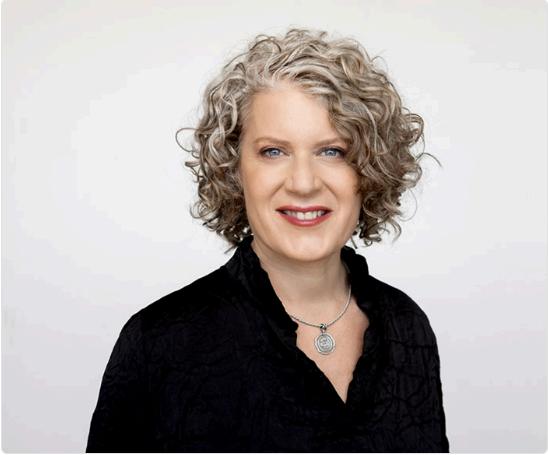
With over thirty years of experience weaving psychology and mindfulness, Shari co-authored the book Therapeutic Presence: A Mindful Approach to Effective Therapeutic Relationships – 2nd Edition (2022) with Dr. Leslie S. Greenberg. Shari’s book: A Practical Guide For Cultivating Therapeutic Presence (2017), offers hands-on tools and guidanceforcultivatingandstrengtheningpresenceintherapy.
Shari is a co-editor of a new book, Self-Compassion in Psychotherapy: A Clinical Handbook (manuscript in preparation). Shari serves on the teaching faculty in Health Psychology at York University. She is an Adjunct Professor in the Faculty of Music at the University of Toronto, in association with the Music and Health Research Collaboratory (MaHRC). Shari is on the steering committee and part of the core faculty of the Self-Compassion in Psychotherapy (SCIP) certificate program and is the Membership and Networking Committee Chair for the International SocietyforEmotion-FocusedTherapy(isEFT).
Shari is the co-director of the Centre for MindBody Health in Toronto, where she offers training, supervision and therapy in Emotion-Focused therapy (EFT) and Mindfulness and Self-Compassion modalities for individualsandcouples. www.sharigeller.ca www.cmbh.space
HEAL CANADA MAGAZINE - 48
cont'd


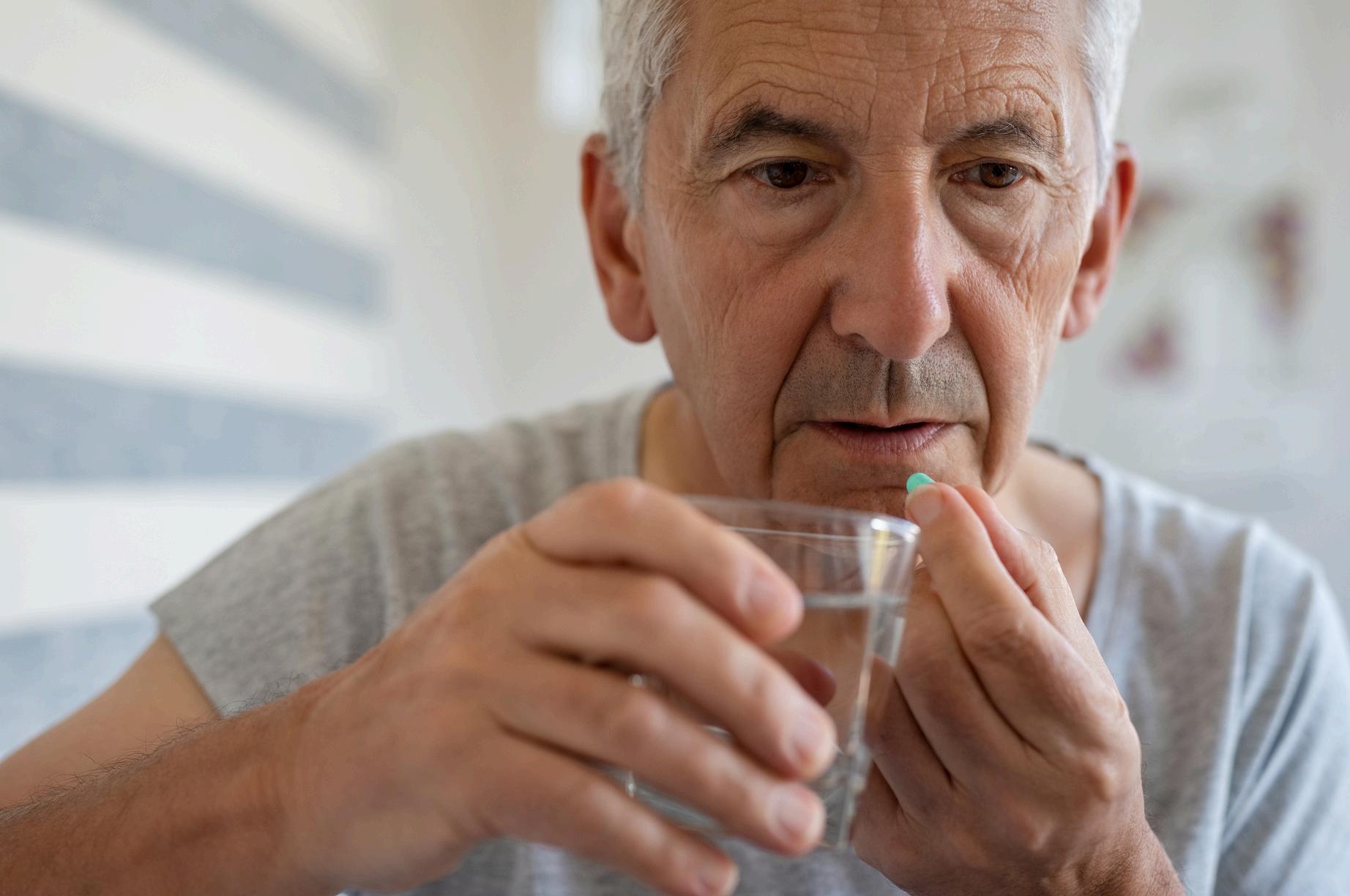



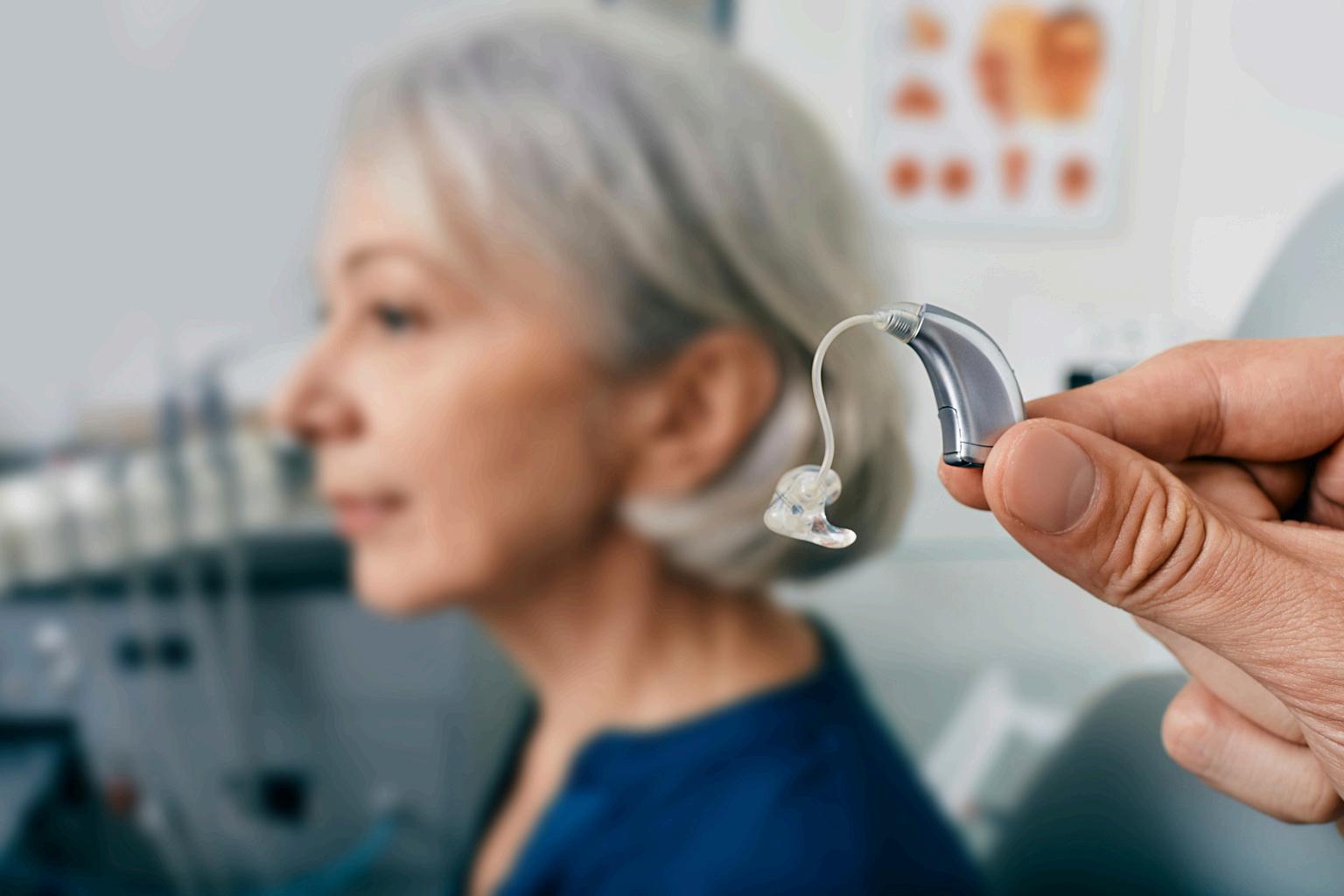
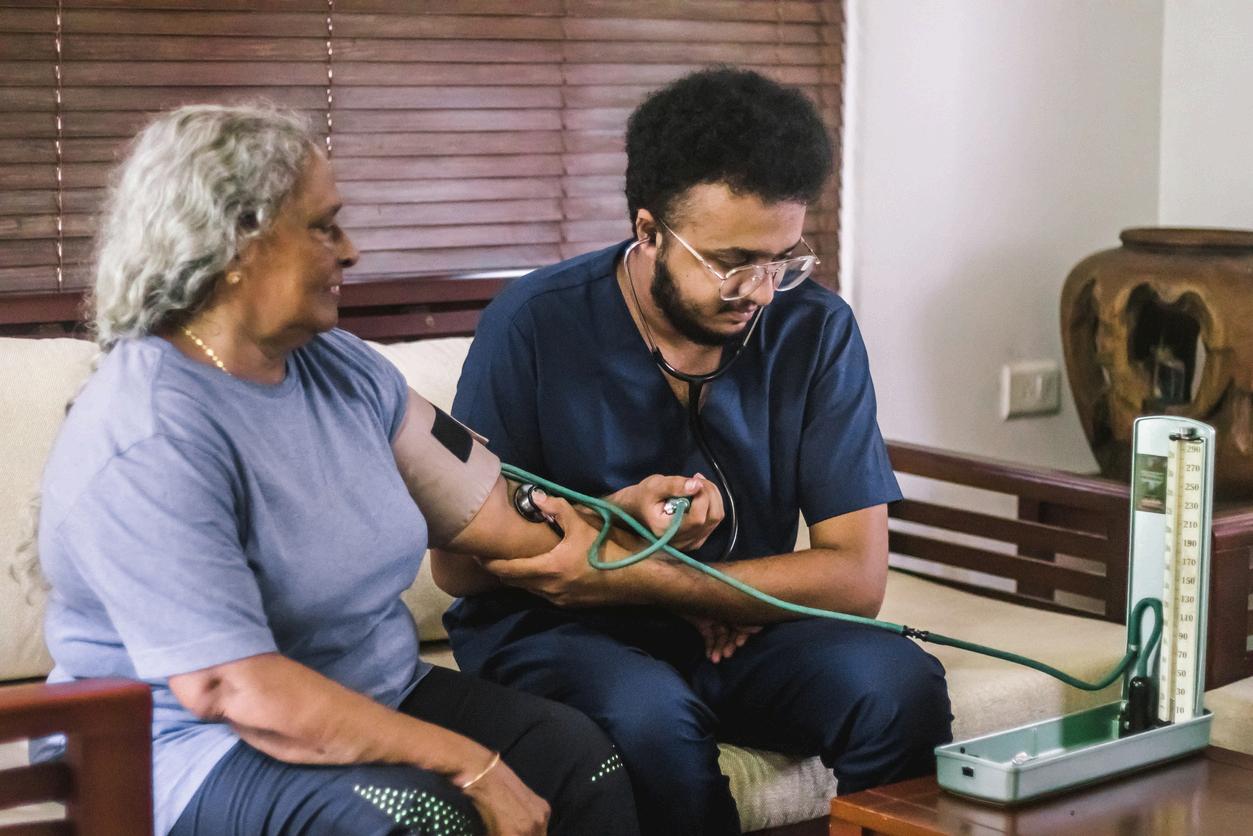


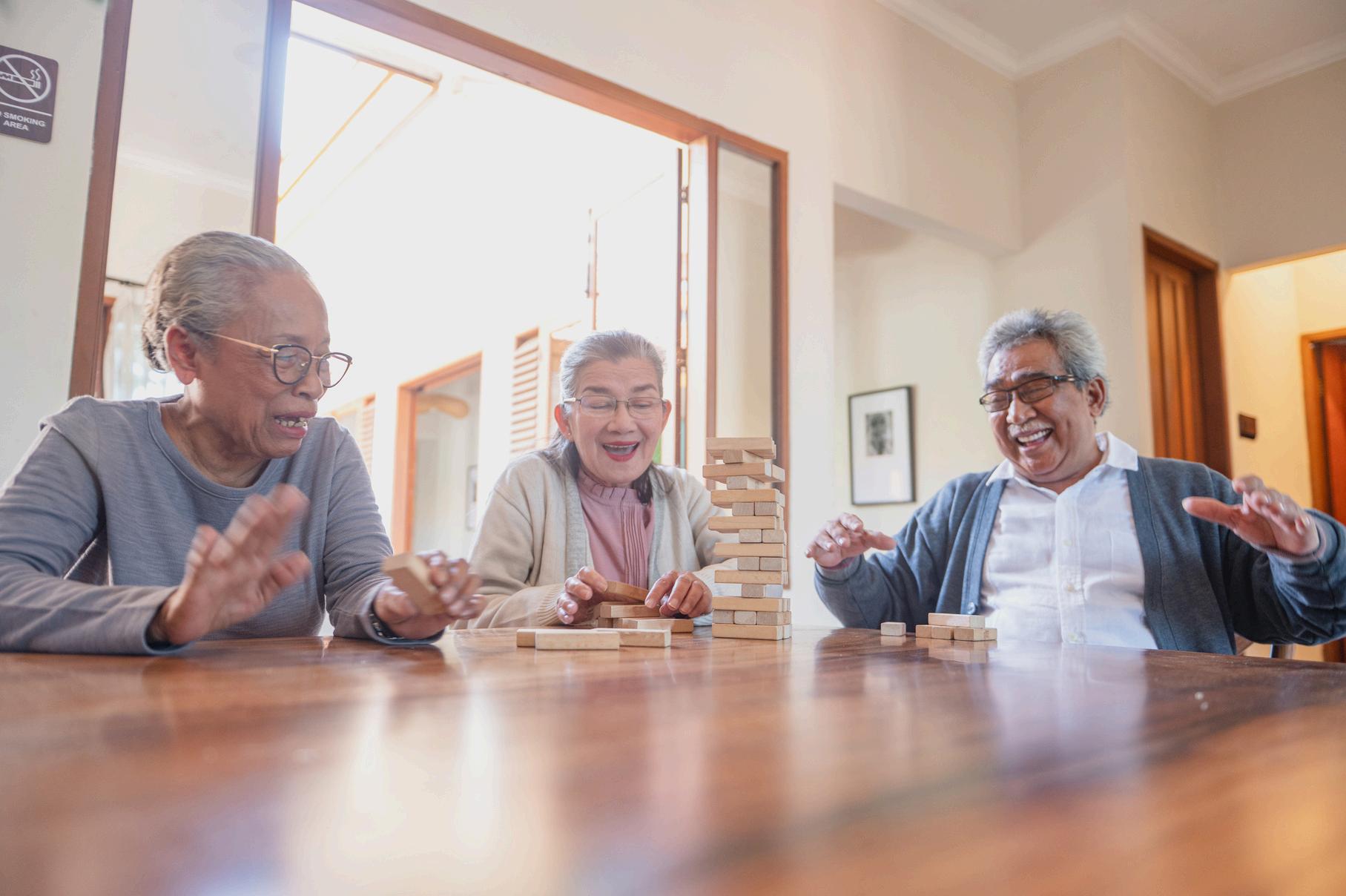

Seniors Health
In today's society, the health of senior citizens stands as a paramount concern, particularly within the framework of the Canadian healthcare system. This heightened focus is more than just a response to the growing number of seniors. Still, it is deeply rooted in recognizing their invaluable contribution to society and their unique challenges in their twilight years.
As people transition into their senior years, they bring unique health and social needs. This shift presents challenges and opportunities for the Canadian healthcare system and society.
In our Seniors Health section, we will provide information to help you in your journey, navigate daily life as a Senior, and provide resources to help you have the best quality of life.
Happy Spring! Happy Feet!
by Wendy Reichental
We have made it to the finish line of Winter. Let’s clap our hands and stomp our feet! As spring unfolds and temperatures rise, we look forward to the transition and shift towards wearing open-toe shoes, sandals, or simply barefoot.






Preparing your feet for spring is vital, particularly for older adults who may require additional attention because of age-related concerns. Here are some essential self-care tips to ready your feet for the season and ensure theirongoinghealthandstrength:
Keep Feet Clean: Foot hygiene is crucial for overall health. Wash feet daily with mild soap and warm water and dry them thoroughly, especially betweenthetoes,topreventfungalinfectionsorodour.
Moisturize: Dry skin can lead to cracks, calluses, itching and discomfort. Apply a moisturizer or foot cream to keep skin hydrated, but avoid applyingitbetweenthetoestopreventfungalgrowth.
Trim Nails Properly: Trim Toenails straight across, not curved, to prevent ingrown nails. Avoid cutting them too short to prevent pain and infection. Useclippersdesignedfortoenails.
Choose Comfortable Footwear and Protect Feet from Injury: Properly fitting shoes with good arch support and cushioning can prevent foot pain and other issues. Avoid tight, narrow, or high-heeled shoes, as they can cause discomfort and increase the risk of foot problems. Appropriate footwear outdoors protects your feet from uneven terrain, sharp objects and extreme temperatures. Use sunscreen on your feet to prevent sunburn. It’s also best to wear shoes as much as possible, even indoors, to offerpropersupportandprotectyourfeet.
Wear Socks: Socks help absorb moisture and provide additional cushioning and protection. Opt for moisture-wicking socks to keep feet dry and reduce the risk of fungal infections. Keeping feet warm can help with circulation.
HEAL CANADA MAGAZINE - 50
Happy Spring! Happy Feet cont'd!
Exercise Feet: Blood circulation to your feet may decrease as you age. To promote healthy circulation, do daily foot exercises like toe curls, stretches, and ankle rotations. These exercises strengthen muscles, improve circulation, and help you maintain flexibility. Also, give yourself regular foot massages or consider having a professional reflexology session for optimal wellbeing.
Manage Chronic Conditions: Seniors with diabetes or circulation problems should pay extra attention to foot care and work closely with healthcare professionals to manage their conditions effectively.
WhentoVisityourPodiatrist.
If you are experiencing any kind of persistent foot pain, swelling, numbness, or other concerning symptoms, consult a podiatrist or healthcare provider for proper diagnosis and treatment beforetheycausemoreseriousproblems.

To maintain the health and well-being of your feet, make foot hygiene a priority by regularly washing them with mild soap and warm water. Conduct routine inspections of your feet, being vigilant for any signs of cuts, sores, blisters, or skin colour or texture changes. This proactive approach to foot care is especially crucial for older adults as it can aid in preventing injuries, falls, and complications arising from chronic conditions such as diabetes. Early detection of issues allowsforpromptintervention,potentiallymitigatingfurthercomplications.
Additional
Facts
Senior adults experience more problems with their feet than younger adults simply because they have used them longer. Women are four times more likely than men to have foot problems, probably because of the preponderance of high heels. Other conditions like diabetes and poor circulation can also affect foot health. The danger of neglecting feet can mean reduced quality of life and problems with coordination, balance, and gait, all of which produce an increased risk of falling and can lead to diseases and infections. Like other parts of the body, however, good care and maintenance can go far in promoting health and ensuring that senior individuals remain mobileandindependent.
Formoreinformationonfootcare,pleasevisit;https://advancingyourhealth.org/foot-care-for-seniors-10-important-tips/
HEAL CANADA MAGAZINE - 51


mybloodmyhealth.ca monsangmasante.ca encouraging Canadians to get their blood checked yearly MyBloodMyhealthisaawareness campaignencouragingCanadian's tolookaftertheirbloodhealthat theiryearlycheckup. HEAL CANADA MAGAZINE - 52
Feeling Comfortable Making the Move to Senior Living Communities.
By Kirstin Bennett, Aging Well Advocate
As people age, an increasing number of them contemplate various living arrangements. However, many older adults still want to stay in their homes, even if it means putting themselves at risk. Slips and falls, caregiver burnout (spouse and adult children), and a lack of physical, mental, and social stimulation are all red flags for family members. Essential conversations and open communicationarecrucial.

Therearetwopopularreasonsformovingintoaseniorlivingcommunity. The first is for proactive reasons, such as when a couple or individual wants to improve their quality of life and living conditions. They recognize the overall benefits, which typically include little to no maintenance stress, a sense of security, health care services, an improved social life, dining, activities, and often appealing amenities such as a theatre, gym, pool, pharmacy, hair salon,spa,andconveniencestores,tonameafew.Let'sexploremore.
AtmosphereandEnvironment
The atmosphere and environment of senior living communities allow residents to flourish and live their lives to their full potential. These residences allow seniors to maintain the independent lifestyle they are used to living. Their space, apartment, and things will enable them to thrive in a peacefulandeloquentlivingenvironment.
HealthyLivingandProperCare
Senior living communities emphasize and ensure that living a healthy lifestyle becomes routine in the residents' daily lives. Calendars full of daily activities are the norm. Residents are provided with options to have nutritious meals made for them. They are encouraged to partake in physical activitiestohelpthemstayinshape.
Do you require consistent or even temporary additional support? Many senior communities offer add-on levels of care if needed. Such offerings could range from laundry, housekeeping, med management,assistancewithbathing,dressingandhygiene,andmuchmore.
Senior residences offer care and support that may not be feasible when aging at home. These communities are designed to cater to the needs of older adults, offering various levels of care, from independent living to assisted living and memory care. Some communities have nursing stations where the staff are trained to handle medical emergencies, and there are regular doctor visitstoensurethehealthandwell-beingofalltheirresidents.
HEAL CANADA MAGAZINE - 53
Feeling Comfortable Making the Move to Senior Living Communities (con’t).
SocialBenefits
One of the most beneficial aspects of making this transition is the available social connections. As we age, our social networks tend to shrink, which can leave us feeling isolated and lonely; social isolation is a real problem for many as they age and can hurt their mental health. Senior living communities offer the opportunity to make new friends and engage in social and physical activities, whichcanhelpseniorsfeelmoreconnectedandfulfilled.
These communities allow residents to meet people of similar age groups and backgrounds through various activities and social events. Many will have movie nights, swimming activities, theme nights, walking groups, bridge, art classes, music, and yoga, to name a few. Through regular socialization and interaction with other residents, they quickly integrate into a loving family that values mutual acceptanceandfriendlyencouragementforengagement.
EndingtheBurdenofHomeOwnership
Owning a home can be a burden due to the various chores that come with it, such as interior and exterior maintenance, shovelling snow, mowing the lawn, cleaning bathrooms, and mopping floors. However, moving to an environment where maintenance is provided does not detract from what you enjoy doing, like gardening. Instead, it creates morefreetimeforresidentstodowhattheylove.
CostSavings
Living in a residence may be perceived as expensive, so it is essential to establish an accurate picture when calculating your budget. Many expenses may be reduced or eliminated; these could include:mortgage, property taxes, school taxes, municipal taxes, utilities, lawn maintenance, home maintenance, cable, telephone, internet, entertainment, transportation, home insurance (tenants' insurance is still required), home security systems, gym membership and housekeeping. On top of these cost savings, additional tax benefits are availableforthosewhotransitiontoaseniorlivingcommunity.
SecurityandSafety

Finally, environments like this increase security and safety. The safety of their parents is of utmost concern. It most often worries adult children about seeing them remain at home. These communities are equipped with security systems and emergency response procedures to address any potential threats or accidents, and these offerings bring forthpeaceofmindtotheadultchildrenandtheresidents. The second most popular reason for moving is the increasing number of health concerns. Why? At a certain point, transitioning to a residence may become the next necessary step to ensure a safe and caring living environment. Mobility may be a challenge, and stairs are more difficult to navigate. Tasks once taken for granted and simple to do, like cooking, cleaning, bathing, and home maintenance, are now becoming more of a burden and are not being executed. For some, there may be cognitive concerns where day-to-day living activities in the family home or condo are becoming morechallenging.
HEAL CANADA MAGAZINE - 54
Feeling Comfortable Making the Move to Senior Living Communities (con’t).

TriggerEvents
Here are some suggestions for addressing concerns if you believe a loved one would benefit from transitioning to a senior living community rather than continuingtoliveathome.
BeProactive
Begin the conversation. Many adult children and caregivers avoid the topic for fear of upsetting their family members. As transition specialists, we receive far too many phone calls from families in crisis mode, having to make quick and sometimes difficult decisions. The decisions will be far easier if the family has previously discussed a transition into a retirement homeorasenior'sresidence.
Incidents such as a slip or fall in the bathtub or stairs, a hospitalization, bills not being paid, an oven left on by mistake, comments about being lonely, nutrition concerns, or a neighbour or friend who recently made a transition to a senior living community are all trigger events that could help spark a conversation.
TreatwithRespect
It is intriguing how roles get reversed. Children do not like being told what to do by their parents. It works the same way in reverse. Parents want to avoid being told what to do. The chances are that they know that something needs to change. Yes, there could be denial and resistance. It is par for the course. Be patient and approach it in a way that creates dialogue instead of telling your family memberswhatmustbedone.
TakeaTour
A lack of knowledge creates fear and anxiety. There is no better way to reduce this anxiety than by visiting a few senior living communities. Tours are an excellent way to become more informed without feeling pressured or obligated to move. Talk to family or friends who may have a loved one already experiencing the benefits of a senior living community. Many of the good residences will also offer a complimentary lunch, enabling you to taste their menu and provide an opportunity to get a feel for their culture and environment.

The senior transition process can be overwhelming. As seniors remodel their lives to move into retirement residences, they can feel displaced, disoriented, or even depressed. A structured plan cansignificantlyreducethestressandemotioninvolvedinanytransition.
HEAL CANADA MAGAZINE - 55
Feeling Comfortable Making the Move to Senior Living Communities (con’t).
HOW?Gethelp!
StepOne:SeniorLivingResidenceSearch

A transition specialist has the professional experience to help find the perfect senior living community that fits anyone's lifestyle. This engagement itself will remove much of the stress of transitioning. Lianas Senior Transition Services has an extensive network of professional and experienced partners across the country who can assist you in navigating this journey. Tours are scheduled based on varied criteria and the selection of possible matches. A professional accompanies the family on these tours and provides guidance and helpful advice throughout the searchprocess.Oncetheappropriateretirementresidenceischosen,thenextstepismoving.
StepTwo:Downsizing
Moving can be a traumatic experience, especially with the accumulated decades of memorabilia and "stuff." Seek out professionals who specialize in transitions for seniors and can coordinate your transition needs, including downsizing.Herearesometipstohelpeaseyouintorightsizing:

· Start Early- Spring cleaning annually can help prepare you for an eventual move. You are never tooyoungtostartsortinganddownsizing.
· Startbehindcloseddoors-siftthroughandorganizeclosets,cupboards,attics,andbasements.
· Keepitsimple-tacklingonlyoneroomatatime.
· Giftit–Distributethingstofamilyandfriends,especiallyfamilyheirlooms.
· Make donations–Donate all unwanted items in good condition to a charitable organization. Remember,oneman'strashisanotherman'streasure.
StepThree:SaleofHomeorCondo
The final step in the transition is selling the home or condo and officially moving into the retirement residence. It's difficult to say goodbye to a place of memories, no doubt about it. But to assist with this, real estate brokers are focusing on the needs of seniors to prep, sell, pack, arrange, and settle into thisnewchapter.

The benefits of senior living communities and assisted living residences can sometimes be overlooked. Understandably, many seniors wish to remain in "the comfort of their own homes," yet making this move can provide numerous benefits to the health and wellness of the decisionmakers. The key here is knowing what is out there, better understanding the process, and knowing whentotransitionfor the mostoptimaloutcome.
People may question it, but the sooner one chooses to transition, the more choices one will have. And don't be surprised after the decision to transition is complete to hear, "I really should have donethissooner!"

For more information about how we can assist you, please visit us at www.lianasservices.com
Kirstin Bennett, Aging Well Advocate B Com, B Ed Kinesiology, Certified Professional Consultant in Aging (CPCA)
Senior Home Safety Specialist, Age Safe Canada ElderCare Specialist–Lianas Senior Transition Services (kbennett@lianasservices com) Managing Director–Premier Home Care (kirstin@premierhomecare ca) linkedin com/in/kirstin-bennett-97999216
HEAL CANADA MAGAZINE - 56

Staying physically active is crucial for seniors to maintain their overall health and quality of life. Engaging in regular fitness activities helps improve strength, flexibility, balance, and cardiovascular health, reducing the risk of injury and chronic diseases. Fortunately, many free workout resources are available, particularly online. One such valuable resource to try is the
YouTube channel https://yes2next.com/
It is a mother-and-daughter dynamic duo showcasing a variety of exercises specifically tailored for those 50 and beyond and for individuals with limited mobility. Their YouTube channel offers you more than 200 free fitness videos.
Whether it's gentle stretches, chair exercises, or low-impact cardio routines, yes2next provides a convenient and effective way for seniors and everyone to stay active and maintain their wellbeing.

HEAL CANADA MAGAZINE - 57

Pediatric Health
Welcome to the Pediatric Health section of Heal Canada Digital Magazine, a dedicated space where we embrace the journey towards pediatric wellness with open arms and open hearts.
We believe than an informed and engaged parent is an empowered one and through enlighteninig articles, expert insights, and insipiring stories, we aim to equip our readers with the tools and knowledge necessary to navigate the complex landscape of pediatric health care.
Join us as we explore how patient advocacy, active engagement and comprehensive education can transform the experience of peditric health care, turning obstacles into opportunities for growth and healing.
What is Classical Homocystinuria (“HCU”)?
Classical Homocystinuria is the most common form of HCU (nine other types) It’s still extremely rare, with an instance of about 1 in every 200,000 births worldwide; however, newborn screening only catches about 50% of babies, and no testing for it everywhere, including In many provinces in Canada, the number of instances is even higher. It’s a genetic disorder, so both parents must have a copy of the gene mutation, and each child of those parents will have a 1 in 4 (25%) chance of being bornwithHCU.
Homocystinuria is the elevation of the amino acid homocysteine, a protein-building block in our diet This build-up of homocysteine happens because the body can’t process the amino acid methionine in our food When patients do not follow the diet and their treatment plan, they are at risk forthefollowing:
Bloodclots(thrombosis) anywhere,including inthebrain.
Opticlensdislocation(ectopialentis).
Increasedrisk of brokenbones.
Scoliosis.
Cognitiveproblems.
Thislistdoesn’tcovereverything,butitoutlinesthemorecommonandwell-knownrisksand outcomes.
Thegoal istokeep thehomocysteinelowenoughtoavoidthesecomplications Todoso,patients mustfollowavery rigidlow-proteindietandatreatmentplan,including theconsumptionof medical formuladaily.
There aren’t exceptions to this. It’s a daily grind. Patients must attend blood labs for regular blood draws to ensure that they remain in the safe zone, but it’s important to note that there are noguarantees
This is why proper newborn screening for HCU is essential so that these risks can be minimized from birth onwards Without knowing a baby has HCU, parents are unable to prevent the outcomesnotedaboveandunnecessary harm will cometothesechildrenatany pointintime.

HEAL CANADA MAGAZINE - 59
New Born Health Screening
by Cheryl Petruk, MBA

ABriefOverviewofNewbornScreening
In the intricate labyrinth of modern healthcare, the practice of newborn screening emerges as a beacon of preemptive care, illuminating a path towards a healthier future for the youngest members of our society. This article delves into the essence of newborn screening, exploring its multifaceted benefits to both the healthcare system and the patients it serves. With a blend of scientific insight and a vision for a healthier tomorrow, we underscore the importance of this early intervention strategy in the landscape of pediatric care.
Newborn screening is a comprehensive health program aimed at the early identification of conditions that are not apparent at birth. Healthcare professionals can detect genetic, endocrinologic, metabolic, and hematologic diseases through simple, effective tests. The essence of this screening lies in its preventative approach, enabling early intervention strategies that can significantlyalterthecourseofachild'slifeforthebetter.
BenefitstotheHealthcareSystem
1.Cost-effectiveness
One of the paramount advantages of newborn screening for the healthcare system is its costeffectiveness. Early detection and treatment of diseases can prevent the escalation of healthcare costs associated with long-term care, surgeries, and treatments for conditions that could have been mitigated or managed more effectively at an early stage. By investing in the upfront costs of screening, the system saves exponentially on the downstream expenses of chronic disease management.
2.ResourceAllocation
Newborn screening allows for more judicious use of healthcare resources. By identifying health issues early, the system can prioritize resource allocation, focusing on prevention and early treatment. This optimization not only improves health outcomes but also enhances the efficiency of healthcare delivery, ensuring that resources are utilized where they can have the greatest impact.
3.DataCollectionandResearch
The process of screening newborns generates valuable data, contributing to a deeper understanding of the prevalence and distribution of various conditions within populations. This wealth of information supports ongoing research, guiding public health policies, and fostering the developmentofnewtreatmentsandinterventionstrategies.
HEAL CANADA MAGAZINE - 60
New Born Health Screening cont'd
BENEFITSFORPATIENTS
1.ImprovedHealthOutcomes
The most direct and significant benefit of newborn screening for patients is the potential for improved health outcomes Early detection of conditions such as phenylketonuria (PKU), congenital hypothyroidism, and sickle cell disease allows for immediate intervention, dramatically improving the quality of life and longevity of affected children. Without screening, these conditions could lead to severe developmental delays, physical disabilities, and, in some cases,life-threatening complications.
2.ReducedBurdenofDisease
Early intervention not only enhances health outcomes but also reduces the overall burden of disease on the patient and their family It minimizes the emotional, physical, and financial stress associated with managing a late-diagnosed condition, contributing to a better quality of life and allowing childrentoreachtheirfull developmental andsocial potential
3.FamilyPlanning
Newborn screening can also have profound implications for family planning. For families with a child affected by a genetic condition, the early identification provided by screening can inform future reproductive choices, offering the opportunity for genetic counseling and consideration of optionsforfuturepregnancies
ThePathForward
While the benefits of newborn screening are well-documented, the path forward involves addressing challenges such as ensuring universal access to screening programs and continually expanding the list of conditions screened to encompass advances in medical research and technology. Moreover, the integration of genetic screening poses ethical, privacy, and consent considerations that must be navigated withsensitivity andforesight.
The importance of newborn screening in healthcare cannot be overstated It represents a critical juncture at which the healthcare system can intervene, altering the life trajectory of its most vulnerable patients for the better. By embracing and advancing newborn screening, healthcare providers can deliver on the promise of preventive care, ensuring that every child has the opportunity to lead a healthy, fulfilling life. The synergy of benefits to both the healthcare system and patients underscores the imperative of newborn screening as a cornerstone of modern pediatric care. Through continued innovation, research, and commitment to universal access, newborn screening can continue to evolve, setting the stage forahealthierfutureforgenerationstocome.

HEAL CANADA MAGAZINE - 61

HEAL CANADA MAGAZINE - 62
Celebrating World Immunization Week: A Global Commitment to Health and the Enduring Fight Against Polio
by Cheryl Petruk,MBA
The decision to immunize children rests with the parents, and it's important that this choice is made with access to accurate and comprehensive information. Health Canada is committed to providing parents with the relevant data and resources needed to make informed decisions about vaccinations. For more guidance, parents are encouraged to consult Health Canada's official publications and speak with healthcare professionals.

Immunizations represent one of the most successful and cost-effective health interventions, preventing an estimated 2-3 million deaths yearly. Vaccines have the power to protect against more than 20 life-threatening diseases, helping to ensure healthier communities and economies. By bolstering the immune system's ability to fight infections, immunizations pave the way for a world where devastating diseases like measles, diphtheria, and whooping cough canberelegatedtotheannalsof history.
The benefits of vaccines extend beyond individual health, contributing to the broader concept of herd immunity. This phenomenon occurs when a significant portion of a community becomes immune to a disease, making its spread from person to person unlikely. Thus, even those who cannot be vaccinated, such as newborns or individuals with certain health conditions, receive protectionfrom theshieldcreatedaroundthem.
LookingForward
As we commemorate World Immunization Week, it's vital to recognize the progress made and the journey ahead. Immunizations remain a crucial tool in the fight against infectious diseases, offering ashieldof protectiontotheworld'smostvulnerablepopulations.
In a time when the world faces new and reemerging health threats, the lessons learned from immunization efforts are more relevant than ever. Supporting vaccination programs, advocating for vaccine equity, and investing in public health infrastructure are critical steps to ensuring a healthierfutureforall.
HEAL CANADA MAGAZINE - 63

*
Allinformationbas don2023data
Advocacy Spotlight

The "Advocacy Spotlight" section of Heal Canada Digital Magazine servesasadynamicplatformdedicatedtoshiningalightonpatient advocacy groups, both new and established. This unique feature aims to introduce these vital organizations to a broader audience, highlighting their missions, achievements, and the critical support theyofferpatientsandtheirfamilies.
Eacheditionofthissegmentmeticulouslyselectsadifferentgroup, delvingintotheirspecificfocusareas,rangingfromrarediseasesto everyday health challenges. By showcasing their stories, initiatives, and community resources, Heal Canada amplifies these groups’ voices and fosters a deeper understanding and connection within thebroaderhealthcarecommunity.
This section is more than just an informational piece; it's a celebration of the tireless efforts and significant impact of these advocacy groups & empowering readers by connecting them with valuableresourcesandsupportnetworks.

AdvocacySpotlight:TheCanadianMPSSociety
At the Canadian MPS Society, our mission is to raise awareness, provide support, and advocate for early diagnosis and access to care for individuals and families affected by the devastating group of genetic disorders known as mucopolysaccharidosis (MPS) and related lysosomal diseases. We are at the forefront of shining a light on these rare conditions through education, outreach, and advocacywestrivetoensurenofamilyhastofacethechallengesofanMPSdiagnosisalone.
Mucopolysaccharidosis (MPS) and related lysosomal storage disorders (LSDs) are a collection of rare, inherited metabolic disorders that can have a devastating impact on individuals and families Seven types of MPS are determined by the deficiency of the specific lysosomal enzyme, which affects the body's ability to break down certain sugars and other substances. Each type has its own unique set of challenges and considerations Some types can have profound neurocognitive impacts, affecting brain development. Others primarily impact physical development and mobility. While enzyme replacement therapies and other treatments are available for certain forms of MPS, others currently lack disease-modifying options, highlighting the need for continued research and therapeuticinnovation.
Affected by MPS, the child's health can deteriorate every day, and just in the first few years of their life, many undergo multiple surgeries, having progressively less movement due to problems with joints & spine. There is often the eventual need for a wheelchair, breathing, & other equipment, with thepossiblelossofneurological&cognitiveabilities.Treatmentconsistsofhourseveryweekhooked up to an IV for enzyme replacement therapy All the while knowing that time is limited & that, as of yet,thereisnocure.
Despite their rarity, MPS diseases can affect anyone, regardless of ethnicity or background However, many families face significant challenges in obtaining a timely diagnosis, which can delay vital treatment and management strategies. The average time to diagnosis for MPS can range from a staggering 3 to 10 years, a heartbreaking reality that the Canadian MPS Society is working tirelessly tochange.WhilethereiscurrentlynocureforMPSdiseases,ongoingresearchandclinicaltrialsoffer hopeforthefuture.
Early diagnosis and intervention are paramount for MPS patients, as they can significantly improve quality of life and slow disease progression. By raising awareness and educating medical professionals and the general public, the Canadian MPS Society is paving the way for earlier recognition of symptoms, leading to more timely diagnoses and access to potentially life-altering treatments. The Canadian MPS Society is advocating the inclusion of MPS in newborn screening in all provincesofCanada.
MPS diseases are lifelong conditions that require multidisciplinary care and a holistic approach to management. The Society provides services and support to individuals and families affected by MPS. From educational resources and financial assistance to networking opportunities and peer support, theorganizationisalifelineforthosenavigatingthecomplexitiesofMPS
HEAL CANADA MAGAZINE - 66
Findoutmore>>https://www.mpssociety.ca/
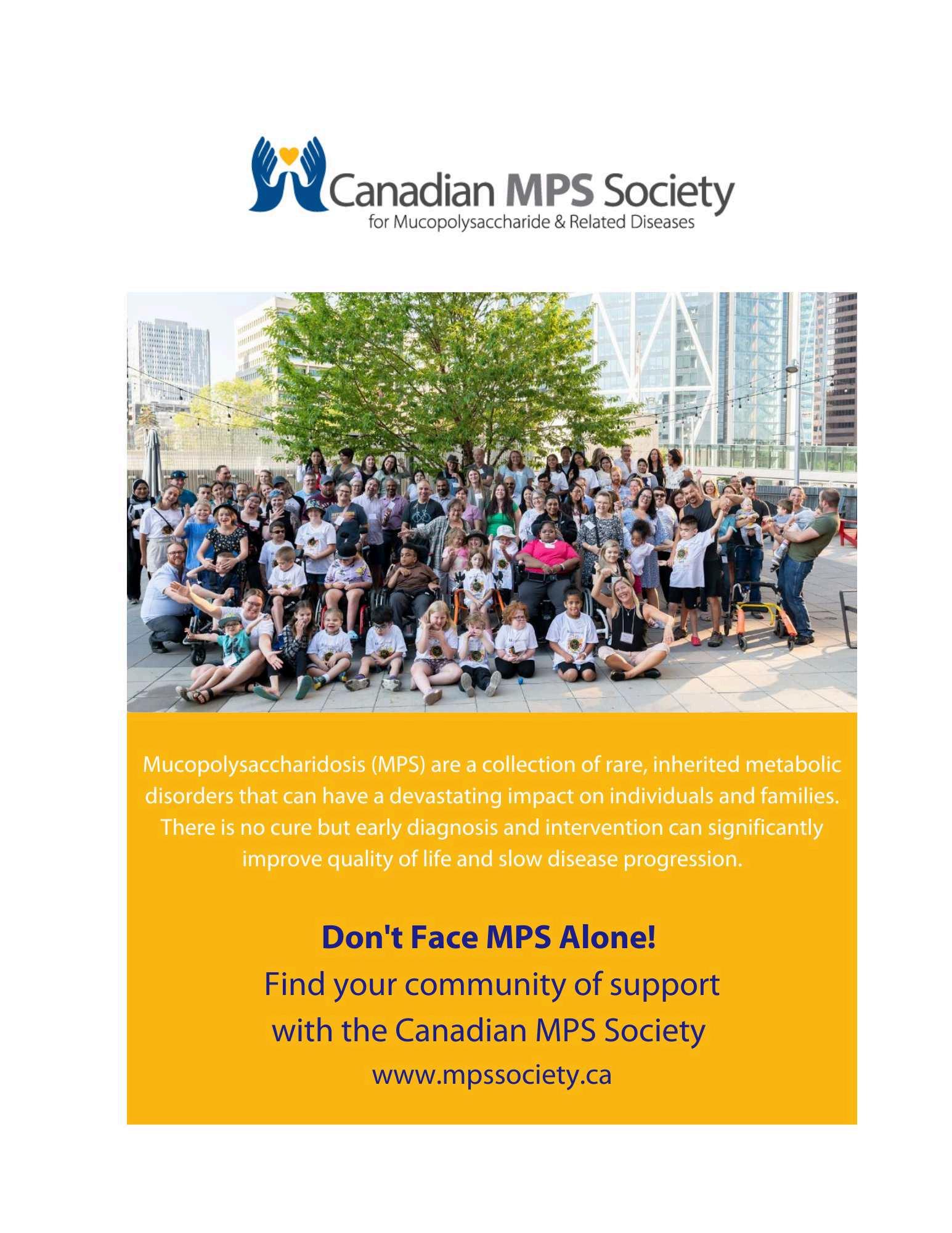
HEAL CANADA MAGAZINE - 67
Sparking a Cure for Multiple Myeloma
By Brian McMahon
4-TIME CANCER CAREGIVER AND FOUNDER OF SPARKCURES
My mother was not a typical patient with cancer. She was an oncology nurse with more than 30 years of experience and a string of acronyms after her name that was nearly as long as my arm. At the time of her multiple myeloma diagnosis, she had been working at Amgen, one of the largestbiotechnologydrugcompanies,fornearlyadecade.
AnAtypicalPatient
She was hit with a double whammy: in addition to discovering her cancer in the late stages, she also had 2 genetic mutations, which placed her disease in a high-risk category. We received a grimprognosisoflessthan30daystolive,evenwithtreatment. However, my mother was an atypical patient because she had the expertise to guide her care and had a Rolodex to connect with top researchers and cancer centers around the country. So, less than 2 weeks after her diagnosis, we were on a plane to the University of Arkansas in Little Rocktoenrollherinaclinicaltrial.
This clinical trial helped my mother to prove the doctor’s prognosis wrong by surviving and fighting her multiple myeloma for almost 2 years. They were two long, hard years for her and our family, but they were two years we were able to share with her when we had been expecting far less. This also was my first glimpse into the critical role that clinical trials and research play in ourunderstandingandtreatingcancer.
TrialsandTribulations
For five years, I was either the primary caregiver or part of a caregiving team 4 different times. I remember sitting at an appointment at a major cancer research center after my father-in-law, John, had just been diagnosed with pancreatic cancer. The doctor never addressed clinical trials. Fortunately, or unfortunately, we were experienced enough to ask about potential clinical trials. We were told that John wasn’t eligible for any trials at that center, but we could search for trials online,andtheywoulddiscussthemwithusatournextappointment. Even after limiting our search to a small geographic area, we found more than 350 clinical trial options. What were we to do? Where could we turn for help? Was he eligible for these clinical trials?Weretheystillopenandacceptingpatients?
We were never able to enroll John in a clinical trial. My mother was the only patient I have cared for who participated in a trial. Given her background, it is easy to understand why, but it also revealed a deeper issue. Patients shouldn’t have to have decades of medical experience to find eligibleclinicaltrials.Thesystemhadfailedus.
LaunchingSparkCures
In late 2014, I launched SparkCures to help patients with multiple myeloma find, understand, and connect with appropriate clinical trials. We spent most of our first year speaking with patients, caregivers, doctors, nurses, and pharmaceutical companies from all over the country bettertounderstandthe“disconnect”fromallsides.
From a patient standpoint, we describe the problem this way: you don’t know what you don’t know. You can’t search for something if you are unaware that it exists. For patients unfamiliar withclinicaltrials,thepubliclyavailableinformationisoftenoutdated,“medicallydense,”
HEAL CANADA MAGAZINE - 68
Sparking a Cure for Multiple Myeloma cont'd
and challenging to find. I saw patients and caregivers from all over the country struggling with the same issues we had, issues that my mother was able to overcome, thanks to her background.
So, we started by working backwards from our Patient First approach. We wanted to provide the same level of access and understanding that my mother had to all patients with multiple myeloma. We went from one support group to another around the country. At the beginning of every event, we would ask people to raise their hands if they have ever talked with their doctor about clinical trials. We still ask that question, and at our last event, less than 10% of the peopleraisedtheirhands.Thisisnotanuncommonresponse.
AConstantlyShiftingLandscape
Many patients and their family members are surprised to learn that clinical trials are not an option of last resort. Still, clinical trials are available for every stage of multiple myeloma, including patients in precursor stages and for newly diagnosed patients. There are clinical trials for patients who have had 1 line of therapy, several disease relapses (returning) after treatment,orthosewithrefractorydisease(notrespondingtotreatment).
This does not mean that a clinical trial is the “right” option for any patient at any point; the challenge for patients is that every time they receive treatment, some clinical trials will disappear forever, and others will become available for the first time. Clinical trials are a constantly shifting landscape of options that should be considered at every treatment decision.
Once patients are aware that clinical trials exist, the issue of access remains. Where do you go to find and understand options that may be appropriate for you? Our answer was to develop a service that matches patients with multiple myeloma to clinical trials in the United States basedonthepatient’shistoryandthetrial’srequirements.
ImportantQuestionstoAsk
Once patients see their personalized matches, they often have significant questions about the trial, including: What is known about the experimental drug? What is the purpose of the study? Is there financial assistance available for travel, lodging and/or meals? What parts of the trial will be paid for by insurance, and what will the study sponsor provide? How often will you be requiredtovisitthestudysite?
These considerations are usually not fully addressed until you are in a pre-screening appointmentwiththetrialdoctor.
We need to set better expectations. Patients should understand what to expect if they participate in a clinical trial and what the clinical trial will expect of them. That’s why we’ve developed relationships with clinical trial sponsors (including pharmaceutical companies and cancer research centers) to provide patient-friendly information not typically available elsewhere.
In late 2016, we added the ability for patients and family members to speak with us directly. One of the most common things people say when they call us for the first time is that they feel like they are on their own up to this point. We have never considered this a pat on the back; instead,itisaproblemthatneedstobecorrected.
HEAL CANADA MAGAZINE - 69
Sparking a Cure for Multiple Myeloma cont'd
OneSparkataTime
We are working day-by-day and patient-by-patient to help make better access to clinical trials a reality. Multiple myeloma is still incurable, but the only path to better therapies and one day a cure is through clinical trials. My mother was given two additional years thanks to the patients who participated in research initiatives before her. I’m proud that my mother’s participation plays a role in helping other mothers, fathers, sisters, brothers, and grandparents live longerwithmultiplemyeloma.
If you are wondering how I came up with the name SparkCures I once heard the quote from the famous Italian poetDante,“A mighty flamefollowethatiny spark.”
Every patient who participates in a clinical trial is a spark Our mighty flame is a cure, and our job is to help ignite it by creating moresparks.
Our services are available to patients’ exploring trials in the United States. However, within the next four months, we will expand our multiple myeloma clinical trial matching services toincludeall myelomaclinical trialsinCanada
To learn more about our Canada expansion or for help exploring trials in Canada, visit us at https://SparkCures.com or contact the SparkCures team at (888) 828-2206 or via email at support@sparkcures.com.


HEAL CANADA MAGAZINE - 70



HEAL CANADA MAGAZINE - 71

HEAL CANADA MAGAZINE - 72

Patient Journey's
The "Patient Journey’s" section of Heal Canada Digital Magazine is close to our heart. This magazine is dedicated to patients and caregivers. We are proud to offer a platform to our community so that we can share, learn and grown together. Here they can share their experience and empower readers by connecting their experience with our Heal Canada community, so that we understand whatever the situation is that we are faced with, we are not alone! United we stand in Advocacy!
“A long journey” by Tyra Langille
In February 2021, I noticed a minor white-like canker sore on the side of my tongue; not overthinking it, I went on with my days as usual, working, eating, and hanging outwithfriends.
In March, I noticed it wasn’t going away & was getting kind of annoying; I saw my doctor, who at the time just casually thought it may have been a case of oral thrush & sent me on my way with some medications. May came along, and it had become more like a bump, still a little white I was at the dentist for a cleaning & filling; I let them know about this spot, and they told me it looked fine, and they went on with the cleaning/filling
A few weeks later, it started to get more irritated, as it was irritated by the recently filled tooth. It felt as if it wasbeing scratchedby thatnewfilling.
I went back in to have them shave down the filling, and again, I was sent on my way with no further examination.

With oral numbing gels from my doctor & alot of Tylenol I had started to get more worried, as it got more irritated with me talking, drinking or even eating… I had started to lose a lot of weight, ear pains, horrible daily headaches, fainting & not being able to eat, drink or really talk. I In August I wentbacktomydoctorinhopeshecouldgetmeareferraltoaENT…
September came & I had a appointment with a ENT— in that appointment he wasted no time in wanting to find out what this was, we did a biopsy that day. On September 21st, 2021 I got the news I had SCC Oral cancer of the tongue stage 2, which surprised not only myself, but the ENT. Not having any risk factors to get this type of cancer like heavy smoking, heavy drinking, HPV or being a male in my late 50’s… it was a confusing moment. He sent off a referral to the ENT surgeon at the UniversityOfAlbertahospitalnearbyandIwasscheduledtomeetmysurgeoninOctoberof2021.
Hearing the words “it’s cancer” is the most heartbreaking, life-altering word imaginable…especially being told this at 25 years old…I instantly went into fight mode, ready to take it on. When I met with my surgeon, Dr. Hadi Seikaly, he calmed the matter. He made sure I understood & was aware of everything happening & what the future could look like. All my trust was in him & his team; they have brought so much comfort to me and my family. I would have a 14-hour surgery where they would be taking half my tongue & reconstructing it with my inner left arm, a complete neck dissection&askingraphfrommyleftupperthigh.OnOctober28th,2021,mylifechangedforever.
HEAL CANADA MAGAZINE - 74
“A long journey” (cont’t)
After a 14-hour surgery that altered my life mentally, physically & emotionally, I was declared NED, meaning my surgeon got all the cancer, and I was clear. What we thought was stage 2 ended up being the beginning stages of stage 3; it was fast, aggressive & fast-growing. I was then in hospital for 14 days as I recovered; I had a trach tube & a feeding tube. I met with physical therapists and dietitians daily; I was on extreme pain meds as I healed from the surgery. Being in the hospital through COVID was horrible; on top of not being able to speak for myself, I’m thankful that my parents & older sister were able to visit me. They would stay with me from morning until night, which got me through—knowing that when I went to sleep, I’d wake up with oneofthembythebedtohelpmetakeontheday.
Finally, by the 10th day, I was able to get my trach tube out after a few complications along with my feeding tube. I was on a liquid diet and couldn’t have been happier to sip water again; for the next 4 days, I was working up from a liquid to a soft food diet so that I could be released. Once I was released, I could get comfy at home & have some home nurses change my dressings until we could do it independently. In December, I met with my oncologist at the Cross Cancer for radiation. We decided on doing 30 rounds, internal & external, with my mouth propped open & I finished that on February1st,2022!

The Month of April is Oral Cancer Month
Since then, I had to reteach myself how to speak, eat & swallow. I spent months not being able to communicate normally and not being able to eat without issues or pains, but I pushed through. Having to accept my new normal, my speech issues & my physical appearance was challenging— my scars on my neck & arm, which I can’t hide. I wear these scars bravely & proudly, but sometimes the stares from strangers can be tough, especially when speaking, as you can see the colourdifferenceinmytongue.
Through physio, swallow tests & speech therapists, I have been able to get back to a new “normal,” Which is great, but I deal with horrible side effects from radiation & issues just with the type of surgery I had..it’s been a lot on my body. Throughout this journey, I was told I was in the 25% of never knowing how I got this cancer; no one my age that I knew or connected with had my cancer and support groups were filled with older adults with lots of health risks that pointed to whytheygotthistypeofcancer.
This then led to 2 interviews on TV here in my city, one of which I partnered with a local dental office to offer free oral cancer screenings for an entire month during April (Oral Cancer Awareness Month) & we raised $500 for oral cancer research! Having my story be featured in many articles & a recent magazine with Alberta Cancer Foundation, I have also been able to attend 3 conferences so far, 2 where I attended to learn how to be an advocate, how to uplift stories & raise awareness. The most recent one has been that I spoke at a dental conference, sharing my story & what more can be done as someone who’s been through oral cancer. I have foundmypurpose,beinganadvocateformyself&others.
HEAL CANADA MAGAZINE - 75
“A long journey” (cont’d)

Having an incredibly supportive family & partner made moments of feeling alone easier…but I really was a lone wolf in this category. Until I stumbled on a group called ‘Young Tongues’ a group of 18-50 year olds with Oral Cancer, most in the UK but more and more popped up in the states, in Canada.. finding them helped me find connections to people my age, same surgeries, this group helped me find my voice which lead me to sharing my story.
This journey altered my life, but I have found my voice through it. I may have lost half my tongue but I gained a powerful voice—I advocate for people like me, for people who no longer have that voice to use. To gain more awareness & to create a community, I’ve been able to mentor a few individuals through their own journey similar to mine & im so honoured to be there for them as I didn’t have anyone like myself there for me at the time. I am 2 years out of surgery + radiation, but the journey isn’t over & it hasnt been easy.
I work hard daily to remain positive & strong. To manage my chronic pain & days where it’s tough to eat or speak. To maintain friendships & gain new experiences while not being able to work due to this life altering journey. To save up for a wedding as I am recently engaged, to build + plan for a life together while I am mourning the loss of my old life.
I am honoured to be an advocate daily, to use my voice to uplift others & their stories. To bring awareness on Oral Cancer, to connect with so many amazing & resilient individuals of all walks of life… it’s a journey I hold close to my heart. My journey is a long, wild one but I’m so lucky to be here to share it! My cancer doesn’t define me, I am more than it.
A Oral Cancer Warrior, advocate & speaker
All my socials & stories can be found here— linktr.ee/tylangille
HEAL CANADA MAGAZINE - 76
Lymphoedema or Lipoedema and what are they?
by Hazel Bell
My introduction to this “disease” of lymphoedema and lipoedema was to understand just how big my legs were after my heart surgery and the truth to myself that I did not have to accept this. At first, I was told by the Cardiac surgeon and then reaffirmed over the next five years by my GP doctor that I just needed to lose weight andexercisemore.
Well, for five years, I did watch my diet and exercise to the limit of my physiotherapist's advice, but my legs only continued to get larger. My pants became more challenging to get over my knees and thighs, yet the waist was getting too big. I even went so far as to start purchasing wide-leg pants, which were getting tight in theleg.
A friend and doctor saw me walking toward her one day, and she was shocked to see the size of my legs compared to the upper part of my body. “You have done so great with taking care of yourself and getting fit, why are your legs so large?” In response to her shock, I askedthesamequestionmyself.

In self research on the internet (I know, not the place for truthful information), I was able to find some very credible sources and books to read. Plus, I then began talking to others with similar issues, and not just legs, people with one arm enlarged from breast cancer surgery.
I discovered that the lymph system is sadly neglected during medical school for doctors and medicalstaff,onlylearningthebasicknowledgeofanatomyandphysiology.Lymphoedemais animbalanceinthepropermovementanddrainageofthelymphsystem. Becausethelymph system is so close to the vein/artery system of the body, treatment is often misdiagnosed as vascular-related. Patients, mainly cancer-related, who have had lymph node extraction, are very susceptible to developing lymphoedema. Like many others have carried the burden of seeking care outside the current medical system. Oncology-related treatment referrals are oftenavailable,buttheseservicesinsidethecurrenthealthsystemareoverburdenedandhave limitedentry.
Ihavebeenblessedwithacommunitynetworkoffriendswhoreferredmetoalocalclinicfor lymph-balancing treatment. Still, this service is limited to trained therapists, unavailable in everycommunity,and,inmostcases,isanentirelyout-of-pocketcosttotheindividual.
HEAL CANADA MAGAZINE - 77
Lymphoedema or Lipoedema and what are they?
It has helped me understand that the correct term for me is ‘Lipoedema,’ a clinical condition seen in women with a link to obesity and osteoarthritis of the knee when the lymphatic system is out of balance with the lymph nodes' operation. I resemble this definition as my upper body hasremainedslim,withlegsthatresembleridingbreeches.
The swelling extends from the pelvic grill down to the ankle, with a fatty pad in the inner thigh of both thighs at knee level. My ankles will swell to the size of my thigh in a four-hour car ride, whichcanbemistakenfordeepveinthrombosis.
Some similar treatments include elevating legs, wearing personally fitted compression garments, and ensuring proper shoes and/or orthotics. It is important to note that any form of vein treatment and sclerosing injections can be potentially dangerous for both lymphoedema andlipoedema(toolateforme!).
Using compression leggings and elevating my feet will generally reduce ankle swelling within 24 hours. However, regular lymph drainage treatments by a registered massage therapist with Dr. Vodder'scertifiedlymphedematraininghavehelpedmeregainmylegs.
I now wear personally fitted compression tights or stockings daily, wear a flat and supportive shoe, continue with proper diet and exercise, and receive regular lymph balance treatments. Each step allows me to walk without feeling like my legs are tree trunks being hauled around. My personal goal is to not need my leggings or stockings every day, especially when the weather is hot, fit back into my dress pants, and wear a healed dress shoe at special occasions.
**Link to include for additional information and resources in your area: https://www.canadalymph.ca/home-of-the-pathways-magazine/

HEAL CANADA MAGAZINE - 78
Masen’s Story
by Melanie Colter
My son, Masen, was born on May 25, 2013, in Surrey, British Columbia, Canada, just outside of Vancouver, British Columbia. His newborn screening test came back with no concerns, so we headed home with our happy, and we believed healthy, newborn baby boy
As first-time parents, Masen immediately became our entire world, bringing us happiness. He was a very content baby, always eating and sleeping well and began to smile and giggle early. We never had any serious concerns about his health or well-being. It was February 2021, and Masen was a healthy and active sevenyear-old
My husband Ryan stayed home that morning, and I took Masen appointment. Masen had been wearing glasses since he was about five years old, so this appointment was nothing unusual. During the appointment, our eye doctor did all the usual things, but there was a point where I felt a shift in his demeanour, and he had one of his staff members come and take Masen to look at glasses in another room. The door had barely closed, and I anxiously asked what was happening. The doctor did his best to assure me that his concerns would have to be investigated, but he was clear that the shaking he saw in Masen’s lenses in his eyes was not to be ignored, and he asked me a series of questions about Masen’s overall health. He mentioned something about a possible connective tissue problem and used the term Marfan’s syndrome, which I later learned has been a misdiagnosis for those with HCU in the past, as it mimics many of the symptoms associated with it. He told me he would write to our pediatrician, and we would start investigating. What this eye doctor was doing, I later realized, wastakingtheleadonsavingMasen’slife.

WhileMasenhappilychattedwiththestaffandlookedatglasses,Ididn’twasteamomentandI discretely looked up Marfan’s syndrome and connective tissue disorders on Google on my phone. Let’s say that my need for answers outweighed any logical thinking. I should have waited. Upuntilthatmoment,Iwasoneofthosepeoplewhohadlivedblissfullyandignorantly,unaware of anything that had to do with the rare disease community. My biggest health scare for my child up until then had been a few high fevers. HCU never once showed up on any of my frantic Google searches. For the next three months, the number of questions far outweighed any answers we would get at any time soon. The potential outcome wasn’t clear in any way, and my mindwasaterrifyingplacetobe.
It was Mother’s Day weekend, 2021, when we first heard the word Homocystinuria. Our pediatrician called us after reviewing the most recent bloodwork. From there, we were set up with the metabolic team at BC Children’s Hospital, and on June 25, 2021, we had the official diagnosis.Masenhadjustturnedeightyearsoldthemonthbefore.
Up until this point, Ryan and I had kept the details of everything from Masen because we had no solid information to share. But now, essentially overnight, Masen had to change his diet completely and start drinking the terrible-tasting formula. He had always been such an
HEAL CANADA MAGAZINE - 79
Masen’s Story cont'd
adventurous eater. He loved all the high-protein foods – eggs, seafood, steak, chicken. We had to explain to him in the most age-appropriate way that we now know these foods aren’t good for his body.
Much of what I mentioned here – months of living in fear, many worst-case scenarios entering your mind on a minute-to-minute basis, having to entertain every parent’s worst nightmare - this all comes from babies being missed at newborn screening. A diagnosis at birth is by no means an easy roadandIwouldneversuggestthat.
For us, with a late diagnosis, we didn’t only grieve the loss of the future we thought we had, the future we thought Masen had, but we had to grieve the type of lifestyle we had been living and just lost We had to tell our eight-year-old that he could not eat most of his favourite foods again, and then we had to enforce that strictly We had to sit with him and watch helplessly as he forced himself to drink the formula We had to start bringing him for blood work regularly so he could be poked and hurt, and there was no end in sight And he felt fine; he wasn’t “sick ” Further, we had some serious investigating to do to find out what damage had been done after going eight years undiagnosed, all while eating a very high protein diet. We felt like our son was a ticking time bomb with all these possible scary outcomes, and to this day, we are infuriated that had this been prevented by being diagnosed at newborn screening, none of this would have happened. We couldbarely comprehendMasen’snextmeal,letalonewhattherestof ourliveswouldlook like.
Here’s what it started to look like Ryan and I spent hours in grocery stores looking at labels We did this alone, and then we did it with Masen and had him help find things that would work We focused on how lucky we were to know and understand his body’ did was get curious and connect with people in similar circumstan tostop resisting theinevitable.Thiswasournewlife,anewreality
And remember that eye doctor? Because of him, we could see a specialist who performed two eye surgeries on Masen, one on each eye, just last year. Those shaking lenses were removed to prevent them from detaching and causing further damage. Masen wears a particular pair of contact lenses to see correctly, and he can see better than ever. Our eye doctor is very humble and says he was doing his job, but I’m sure he saved my son’s life and at least saved him from severe eye damage that would have been much harder to fix had we not known.
Today, Masen is a hard-working, athletic, resilient grade-five student who loves sports, specifically hockey, football and basketball. He loves to make everyone laugh with his quick wit and sarcasm. He is remarkable in every way and more courageous than anyone I know. We are so proud of the person thatheis.
Author Bio and Contact Information

Melanie Colter is mom and advocate for her ten-year-old son, Masen. She loves to connect with others in the rare disease community after experiencing firsthand the challenges, uncertainties and lack of resources faced by those who receive a rare diagnosis. Melanie lives just outside of Vancouver, British Columbia with her husband and son.
Melanie can be reached via email at mcolter82@gmail.com
HEAL CANADA MAGAZINE - 80

If you would like to share your story about your journey, as a patient, caregiver, or advocate, send us a short (150 words) description of your journey, for consideration in an upcoming issue! email your submission to: digitalmagazine@healcanada.org

Share your Patient Journey Story with us!
HEAL CANADA MAGAZINE - 81



Living Well
In this vibrant corner of Heal Canada Digital Magazine, we're excited to introduce you to our "Living Well" section – a treasure trove of inspiration and guidance for those seeking a healthier, happier, and more balanced life. Our mission is to empower you with expert insights, the latest health trends, and personal wellness stories that resonate withreal-lifechallengesandtriumphs.
Here, we explore the many facets of well-being: from nourishing your body with wholesome nutrition to rejuvenating your mind through meditation and mindfulness. You'll find practical advice on exercise, mental health, and preventive care, all tailored to fit into your busy lifestyle.
But "Living Well" is more than just a guide; it's a community. We encourage you to engage with us, share your journeys, and learn from others who are on similar paths. Whether you're taking the first steps towards a healthier you or are further along your journey, we're here to supportandinspireyouateveryturn.
Living Well will provide topics that matter the most to your health and happiness.Let'scelebratethejoyoflivingwelltogether!
Finding Your Mind-Body Connection
by Alice Funk
How Your Physical Health Impacts Mental Well-being – What’s really going on in there? When you think about it, many of our worlds are very similar. They consist of going to work, meeting deadlines, dealing with clients & customers, and just trying to get through the day making it to the weekend so you canhaveaminutetobreathe.
Once home, we then must turn our attention to dealing with maintaining that home which includes the stress of paying bills, rising utility prices, what’s happening on “The Bachelor”, whatareyougoingtomakefordinnertonight?
Oh, and maybe some social activities with friends and family, if you’ve got time Additionally, you might be a parent who needs to also focus on kids and their numerous schedules! The neverending cycle of getting them to school, packing lunches, dropping off at sports activities, music lessons, classmate’s birthday parties (you bought a card, right?), dentist appointments, sibling fightsandmaybealittlebitof family petdramathrownintothemix!
Others may have the task of taking care of their aging parents or spouse, which can take on a whole new level of patience, a separate set of skills and different schedules again With all the chaos happening its easy to overlook or completely forget the profound connection between our physical health and mental well-being while “going through the motions” of daily life We often compartmentalize (or bury) these aspects of our health, and research consistently shows that they are deeply interconnected. Let’s explore more of the link between physical health and mental well-being and possibly add some practical ways to help us nurture both for a happier, morefulfilling lifewithjustalittlelessstress.
TheScienceBehindtheConnection
Numerous studies and research have demonstrated the intricate relationship and connection between our physical health and mental well-being. For example, regular exercise has been shown to not only improve our physical fitness but also reduce symptoms of depression, anxiety, and stress. Proper nutrition is essential not only for physical health but also for brain function, mood regulation, hormone balancing, pain reduction, and so much more. Last but not least, adequate sleep plays a crucial role in cognitive function, emotional regulation, and overall mental health.
Let’sgoalittledeeper…
Exercise: More Than Physical Fitness Exercise is often promoted and seen for its physical benefits, such as improving cardiovascular health and building strength. However, its impact on mental well-being is equally significant. Have you ever gotten irritated when your doctor tells you to just “exercise and eat healthier”? You then wonder – Is that all I have to do? Well, it’s a start. There are reasons this seems to be the “go-to,” but I agree it needs a bit more explanation and follow-through to succeed. Regular physical activity releases endorphins, neurotransmitters thatactasnatural moodlifters,AKA ourbuilt-in“Happy Hormones.”
HEAL CANADA MAGAZINE - 83
Finding Your Mind-Body Connection cont'd
Exercise also reduces levels of stress hormones like cortisol, leading to decreased feelings of anxiety and tension. Whether it’s a brisk walk out in nature, a yoga session, or a dance class, finding activities that you enjoy and do consistently can significantly enhance your mental well--being. Have you ever NOT felt a little better after some sort of exercise?
Exercise also “greases” our body joints and helps us move better. Have you ever heard the adage “Use it or lose it”? You can apply that to your body as well Whether you sit all day at a desk or home zoned out watching Netflix, your body becomes stagnant and stiff without movement, which can also leadtoitfeeling oreandachy
When we move our bodies, they get what they need (movement/lubrication) and respond accordingly. Of course, there are times when precautions are needed .to keep us safe, but movement can still be done in some alternative manner,suchaschairexercises

The Importance of Sleep
Nutrition: Feeding Your Body and Mind

The food we eat doesn't just fuel our bodies; it also nourishes our brains. A diet rich in fruits, vegetables, whole grains, and lean proteins provides essential nutrients that support brain function and mood regulation. Conversely, diets high in processed foods, sugar, and unhealthy fats have been linked to an increased risk of depression and anxiety. (Sorry, the Snickers commercial was lying to us all!) Some studies have shown these food items can increase the inflammatory index and cause more pain. By prioritizing whole, nutrient-dense foods and staying hydrated, you can support both your physical health and mental well-being.
In today’s hyper-connected and digital world, sleep is often sacrificed for productivity or entertainment (watch another Netflix episode? Yes, please!). Adequate sleep is crucial for cognitive function, emotional regulation, and overall well-being - just think of a cranky toddler during nap time! Chronic sleep deprivation has been linked to an array of mental health issues, including depression, anxiety, and impaired decision-making. Many chronic pain sufferers, as well as others (new mothers), complain of “Brain Fog” (confusion, forgetfulness and difficulty concentrating), which is consistent with the sleep deprivation they also suffer from.
This is where Sleep Hygiene comes in. This process is when we establish a consistent sleep routine, create a restful sleep environment, and practice relaxation techniques that can help improve sleep quality and enhance mental resilience. If you have children, you might remember this when they were little – bath, PJs, snack, story, kiss and bed – this was a sleep hygiene routine!
NOTE:Therearetimes,though,thatfurthermedicaltestingandpharmaceuticalsmaybe neededtoaccomplishpropersleeppatterns.
HEAL CANADA MAGAZINE - 84
Finding
Tips for Cultivating the Mind-Body Connection:
Prioritize Physical Activity: Shake and move that booty! Find enjoyable and fun ways to incorporate exercise into your daily routine! Take a morning walk, have a dance party in the kitchen, try a new activity, or find an Exercise App to follow at home.
Nourish Your Body: Feed that soul! Focus on eating nutrient-rich whole foods.
Aim for a balanced diet that includes a variety of fruits, vegetables, whole grains, and lean proteins.
Get Adequate Sleep: Catch some zzz’s! Make sleep a priority by creating a sleep routine –bubble bath, dim lights, ear plugs, put away the phone and shut off the TV!
Practice Stress Management Techniques: Namaste! Incorporate stress- reducing activities in your daily life, such as mindfulness meditation, deep breathing exercises, or spending time in nature.
Lots of Apps are available to help with this as well.
Seek Professional Support: It’s okay to ask for help! If you are struggling with mental health issues, do not hesitate to seek support from a mental health professional. Therapy, counselling, and medication can be valuable tools in managing and overcoming challenges.
MENTAL HEALTH SUPPORT LINKS – CANADA 9-8-8 SUICIDE CRISIS HELPLINE
ConnectingItAllTogether
By recognizing andnurturing theconnectionbetweenourownphysical healthandmental wellbeing,wecancultivateagreatersenseof balance,resilience,andvitality inourlives.Stop and listentowhatyourbody istelling you!FeedMe!IneedaNap!
MakeYOUapriority:
Scheduleregularexercise
Nutritiousmeals
Restful sleep
Andstressmanagement!
Supporting ourbodiesandmindswill ultimately leadtoahappierandhealthierlife.Don’tletit overwhelm you;everything startswithatiny,itty-bitty step.Onefootinfrontof theother. So…whatwillyourfirstsmallstepbe?

AliceFunkisaMentalFitnessMindsetCoachfromSturgeonCounty,Albertawho lovestoencourageandguideotherstobetheirtrueselvesandreachtheirgoals.Her ownjourneyandexperienceshavetaughtherthatlearningtoknowyourselfandwhat youneedisthemightieststeptotake(andsometimesthescariestoneaswell).
Thefirststeponyournewpathisfindingyou!
IfyouwouldliketochatwithAlice,pleasecontactherat info@newpathsolution com or book a FREE Connection Session!
Your Mind-Body Connection cont'd
HEAL CANADA MAGAZINE - 85
Nourish Yourself with Whole Foods
by Sue Lemoine, RHNP
We all eat, but are the foods you’re eating nourishing you?
There is a difference between “nourishing” and “eating.” Eating includes anything you put in your mouth that you happen to find in your kitchen. Whether it’s a stalk of celery or a bag of cotton candy, if you swallowed it, you ate it. But nourishing is a whole differentconcept.
Nourishing yourself is a commitment to loving yourself through what you consume. The dictionary defines the wordnourishthisway:

“To nourish a person, animal, or plant means to provide them with the food necessary for life, growth,andgoodhealth.”Wemustnourishourbodieswithfoodforlife,growth,andgoodhealth.
Whattypesoffoodsdothat?
Let’s go back in time to the “cavemen” days when our biome originated. Think about the types of foods that were available. Foods from nature – berries and plants, animals, etc. So then let’s take a look at the definition of wholefoods: “ Food that has been processed or refined as little as possibleandisfreefromadditivesorotherartificialsubstances.”
These would be foods that are “from the earth.” For example, if it swam, flew, or grew, it is a whole food. So if it comes in a package with a list of ingredients as long as your arm, chances are that it didn’t swim, fly, or grow anywhere. It was packaged in a factory, sometimes with very few nourishingingredientsforourbodies.
One exception to packaged foods is one-ingredient foods. These include pure maple syrup, raw honey, natural peanut butter, rice, some canned items, and frozen vegetables and/or fruits. If you look at the ingredient list for these foods, they would be “maple syrup,” “raw honey,” “peanuts,” “rice,” “broccoli,” etc. Pay particular attention to added sugars and salts in frozen and canned foods.
One hint: if you can’t pronounce the ingredient on the list, it’s probably a chemical and should be put back on the shelf (more onchemicalingredientsinfuturearticles).
HEAL CANADA MAGAZINE - 86
Nourish Yourself with Whole Foods cont'd
Whenyoueatwholefoods:
You’ll feel more energetic. Whole foods help regulate your blood sugar to avoid energy-zapping sugar spikes. Your body will also access energizing nutrients like B-complex vitamins and iron thathelpyourcellsaccessfuel.
You’ll improve your cardiovascular health. Fruits and vegetables, especially citrus fruits, are high in vitamin C, which helps strengthen blood vessels and lower the risk of heart disease, stroke, and highbloodpressure.
You’ll help prevent future disease. Eating whole foods provides more plant nutrients and antioxidants,helpingboostyourimmunityandwardofffluanddisease.
You’ll sleep better. Researchers have linked good-for-you foods like dark leafy greens, whole grains,andfishtobettersleep.Peoplewhoeatbettersleepbetter.
You’ll improve your mental health. An increased intake of B vitamins will boost your dopamine production, increasing your happiness factor. Foods like salmon, fish, walnuts, chia seeds, spinach, and soybeans provide a healthy dose of Omega 3s that combat moodiness and depression.
You know that your improved health starts in the kitchen Healthy, whole foods pack more nutrition in smaller portions than processed foods They keep your blood sugar on an even keel so you’re not fighting appetite and energy swings, and they help you overcome chemical/sugar food addictionsthathaveyou constantly craving andovereating.
WhyshouldIeatwholefoods?
You care about your health, which is why you’re reading this article. It’s important that we show ourselves some love by nourishing our bodies with foods that promote our healthiest selves. We only have one body, and if we don’t care for it, it won’t beabletofightsicknessanddisease.
Changing how you eat can be hard, especially if you’ve been eating processed foods for a long time. If you start slow, replacing one food at a time, the change will be easier to manage andwill bealasting change.

HEAL CANADA MAGAZINE - 87 Sue Lemoine, RHNP Flourish Holistic Nutrition sue@flourish-nutrition.ca www.flourish-nutrition.ca
Recipes
by Sue Lemoine, RHNP
BREAKFAST
GREEN SMOOTHIE
½ frozen banana
1 cup spinach
½ avocado
1 scoop protein powder
1 cup dairy free milk
2 tablespoons chia seeds
Blend all ingredients in a high-speed blender. Add more water and/or ice for desired consistency.
LUNCH
MEDITERRANEAN SALAD
Serves 2
4 cups spinach
2 tablespoons extra virgin olive oil
2 tablespoons lemon juice
1 cucumber, chopped
10 black olives, without pit
4 ounces dairy free feta cheese (or other cheese substitute)
1 teaspoon fresh parsley
1 can salmon, BPA free, drained
Balsamic vinegar to taste


Place the spinach in a mixing bowl along with the vegetables . Add the olive oil, lemon juice, and parsley and feta. Toss well with your hands, working the dressing into the greens. Top with salmon; add balsamic vinegar to taste.
HEAL CANADA MAGAZINE - 88
DINNER
BEEF FAJITA BOWL
Serves 2
8 oz beef sirloin strips (or chicken)
1 cup mushrooms, diced
1/2 cup of onions
2 cloves of garlic, crushed (let sit for 15 minutes before adding to recipe)
1/2 cup of brown rice
1 avocado
1 tbsp of coconut oil
Fajita Seasoning
1 tbsp paprika
1 tsp garlic powder
1 tsp onion powder
1/2 tsp cayenne powder

Start by adding 1/2 cup of water and the rice to a pot and bring to a boil, then lower the heat to a simmer.
Place pan on medium heat and add the coconut oil.
Once the oil has melted add the onions and garlic and sauté for 1 minute. Add the beef strips and cook for 3-5 minutes, add the mushrooms and fajita seasoning spices and cook for an extra 5 minutes.
Combine in a bowl the beef mixture, brown rice and mashed avocado.
HEAL CANADA MAGAZINE - 89
Ask the Professional

Welcome to the "Ask the Professional" section of Heal Canada Digital Magazine, a dedicated space where curiosity meets expertise in the realm of healthcare.
In our pursuit to empower patients and their advocates with knowledge, this section bridges the gap between medical professionals and our readers, offering clear, accurate, and practical answers to your most pressing questions. Whether you're navigating the complexities of clinical trials, seeking advice on managing chronic conditions, or exploring the latest in wellness trends, our experts are here to provide you with insights grounded in the latest research and clinical experience.
Let's embark on this journey of understanding together, fostering a community where informed decisions lead to better health outcomes.
Ask the Professional
Maureen Carpenter, CD BSC, RN provides her insight.
1.Whatarethepotentialbenefitsandrisksofparticipatinginaclinicaltrial?
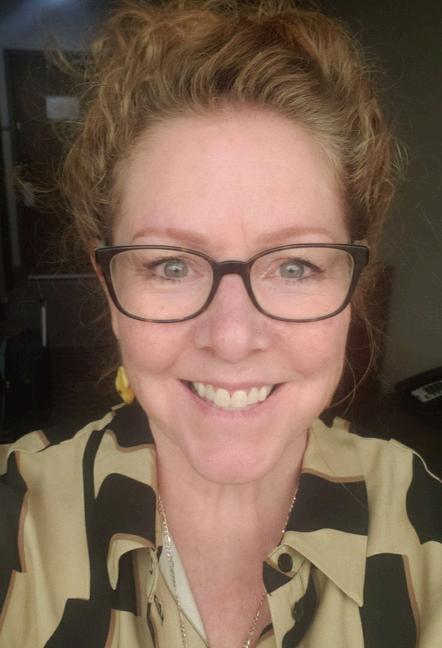
Participating in a clinical trial can offer access to new treatments before they are widely available, potentially offering better outcomes than standard therapies. Participants contribute to medical research that might benefit others with the same condition in the future. However, risks include experiencing unknown side effects, the treatment possibly being less effective than current standards, and the commitment of time and travel. Each trial has specific criteria and protocols, which are important to understand thoroughly before consenting to participate. Informed consent is a fundamental part of the process, ensuring participants are aware of all potentialbenefitsandrisks.
2. How is the privacy and safety of participants protected in clinical trials? Regulatory bodies mandate strict guidelines to ensure the safety and privacy of participants in clinical trials. This includes Institutional Review Boards (IRBs) or Ethics Committees that review and monitor studies to protect participants' rights and well-being. Personal health information is protected under confidentiality agreements, and data is anonymized in study results. Safety measures include close monitoring, with participants free to withdraw at any time. The consent form, a key document provided to all participants, outlines how privacy and safety are safeguarded, reflectingthetrial'sadherencetoethicalandlegalstandards.
3.Whatshouldpatientadvocatesknowabouttheeligibilitycriteriaforclinicaltrials? Eligibility criteria for clinical trials are designed to ensure the safety of participants and the validity of the data collected. These criteria can include age, gender, the type and stage of a disease, previous treatment history, and other medical conditions. Patient advocates should understand that these criteria are not meant to exclude people unfairly but to identify appropriate participants for the study. It's important to discuss these criteria with healthcare providers to understand how they apply to specific patients and to find the most suitable trials. Being well-informed aboutthesecriteriacanhelppatientadvocatesnavigatetheselectionprocessmoreeffectively.
4.Howcanpatientadvocatesassessthequalityandcredibilityofaclinicaltrial?
To assess a trial's quality and credibility, patient advocates should look for trials registered with recognized clinical trial registries, such as ClinicalTrials.gov, which provide detailed information about the study's purpose, eligibility criteria, location, and sponsoring organization. Investigating the research team's background, the institution's reputation, and whether the study is funded by reputable organizations can also offer insights into its credibility. Additionally, peer-reviewed publications resulting from the trial provide an extra layer of validation. Advocates can also consult healthcare providers and patient advocacy groups for their opinions on specific trials. Ensuring the trial adheres to ethical standards and is transparentaboutitsmethodologyandfundingsourcesiscrucial.
HEAL CANADA MAGAZINE - 91




Resources
Are you a care partner for a patient? Visit our website for resources that can assist you in helping your patient with a better quality of life living with their diagnosis, and find resources that can assist you as a care partner. Visit www.healcanada.org Stakeholder Resources Visit our website at www.healcanada.org for resources needed to help you in working with advocacy groups
Care partners
Questions to ask your specialist.

When facing a health concern, your initial visit is to your primary care provider or family doctor. However, consulting a specialist may become necessary for more intricate health issues.
Arriving at your appointment with prepared questions is crucial to help you understand yourcondition,treatmentoptions,andwhattoexpect.
Hereareafewcommonquestionstoaskyourspecialistatyourfirstconsultation:
●Whatismydiagnosis,andwhatdoesitmean?
●Whatarethepotentialcausesorcontributingfactorsofmycondition?
●Whataretheavailabletreatmentoptions,andwhatdoyourecommendforme?
●Whatarethepotentialrisksandbenefitsofeachtreatmentoption?
●ArethereanylifestylechangesIshouldconsidertomanagemyconditionbetter?
●WhatcanIexpectintermsofrecoveryorimprovementwithtreatment?
●HowfrequentlyshouldIfollowupwithyou,andwhatsignsorsymptomsshouldpromptmeto seekimmediatemedicalattention?
●ArethereanyspecifictestsorproceduresImustundergo,andwhatdotheyinvolve?
●Doyouhaveanyeducationalmaterialsorresourcestohelpmelearnmoreaboutmycondition?
Havingapartner,friend,orrelativeaccompanyyoutoyourappointmentcanbehighlybeneficial. Theycanserveasanadditionalsetofearsandactasyouradvocate.Thesequestionscanbea startingpointforaproductiveconversationwithyourspecialistandensureyoureceivethe informationandguidanceyouneedforyourcare.
HEAL CANADA MAGAZINE - 93
Join Heal Canada's Patient Advisory Council
Be part of the Heal Canada Resource Advisory Council. Provide ongoing feedback on issues relevant to Patient Advocacy in Canada. We are looking for Patients, Care-partners, and General Advocates
Send you information to:
Admin@healcanada.org or visit our website and fill out our application form and find out more details about time commitment required.

HEAL CANADA MAGAZINE - 94


Join our Resource List Patient Advocacy Organization Registry Have your Patient Advocacy Organization listed with Heal Canada, so that Patients & their Carepartners can find you! Send your coordinates to: admin@healcanada.org & we will add you to our Patient Advocacy Registry HEAL CANADA MAGAZINE - 95
References
Whatisaclinicaltrial?References:
TheDrugDevelopmentProcess|FDA 1
2.
Entering the era of computationally driven drug development—PubMed (nih.gov), Neha Maharao 1, Victor Antontsev 1, Matthew Wright 2, Jyotika Varshney 1 Drugg Metab Rev . 2020 May;52(2):283-298.
3. TheDrugDevelopmentandApprovalProcess|FDAReview.org
Estimated Research and Development Investment Needed to Bring a New Medicine to Market, 2009-2018 - PubMed (nih.gov). JAMA Olivier J Wouters 1, Martin McKee 2, Jeroen Luyten 32020 Mar3;323(9):844-853.
TheevolutionofpatientrightsinclinicaltrialsReferences: AboutClinicalTrialsDay—ClinicalTrialsDay 1. DeclarationofHelsinki|EthicalPrinciplesforMedicalResearch|Britannica 2. DeclarationofHelsinki2000–WMA–TheWorldMedicalAssociation 3. ICHGuidanceDocuments|FDA 4. GoodClinicalPractices-Canada.ca 5.
HowtoaccessnewmedicationsinCanada.
Glennie, J. et al, Canadian public payer best practices for providing timely patient access to cancertherapies,CanadianHealthPolicyInstitute,Nov.2023 1
Rawson et Adams, Pharmacare won’t help Canadians with rare disorders, Canadian Health PolicyInstitute,Nov.2023 2. EmergenttreatmentsReferences:
Akinci, B., Oral, E., et. al. Comorbidities and Survival in Patients with Lipodystrophy: An InternationalChartReviewStudy.J.Clin.Endocrinol.Metab.2019,104(11):5120-5135.
Brown, R., Oral, E., et. al. Long-term effectiveness and safety of metreleptin in the treatment of patientswithgeneralizedlipodystrophy.Endocrine.2018Jun;60(3):479-489.
Sung H, et al. Global Cancer Statistics 2020: GLOBOCAN Estimates of Incidence and Mortality Worldwidefor36Cancersin185Countries.CACancerJClin.2021;10.3322/caac.21660.
productmonograph
Sandborn et al., Etrasimod as induction and maintenance therapy for ulcerative colitis (ELEVATE): two randomized, double-blind, placebo-controlled, phase 3 studies, VOLUME 401, ISSUE10383,P1159-1171,APRIL08,2023
Wasserstein MP, Aron A, Brodie SE, Simonaro C, Desnick RJ, McGovern MM. Acid sphingomyelinase deficiency: prevalence and characterization of an intermediate phenotype of Niemann–Pickdisease.JPediatr.2006;149(4):554–9.
XENPOZYMEproductmonograph
4.
Prolia
1 MYALEPTAProduct
2
productmonograph
Monograph.
3
4.
5.
6.
Truaq
8.
9. HEAL CANADA MAGAZINE - 96
7.
References
Are clinical trials diverse, inclusive, and equitable? References: Number of trial registrations by location, disease, phase of development, age and sex of trial participants (1999-2022) (who.int)
Tuskegee Experiment: The Infamous Syphilis Study | HISTORY
The dark history of Canada's Food Guide: How experiments on Indigenous children shaped nutrition policy | CBC Radio
National Minority Health Month 2024 | FDA
Newborn Screening
10. American Academy of Pediatrics. (2023). Newborn screening: A blueprint for the future. American Academy of Pediatrics.
11. Centers for Disease Control and Prevention. (2023). Newborn screening portal. https://www.cdc.gov/newbornscreening/
12. Kemper, A. R., Boyle, C. A., Aceves, J., et al. (2020). Long-term outcomes of newborn screening. Pediatrics, 145(3). https://doi.org/10.1542/peds.2019-1308
13. Health Resources and Services Administration. (2023). Heritable disorders program. https://www.hrsa.gov/
14. United Nations Children's Fund. (2021). Early childhood development: The promise of early assessment and intervention. UNICEF.
15. World Health Organization. (2022). Newborn screening for sickle cell disease and other hemoglobin disorders. WHO.
16. Genetic Alliance; National Newborn Screening & Global Resource Center. (2021). Newborn screening in the genomic era: Expanding the scope. Genetic Alliance.
A Patient-Centered Approach to Clinical Trials: The Benefits of Engaging Patients and Patient Groups
1. The Blueprint Translational Research Group. Promoting Patient Engagement in Early Phase Clinical Trials: How Canadian Funding Agencies Can Help: A Policy Brief. Accessed online at: https://www.ohri.ca/blueprint/documents/Policy
2 Batist G, Michaud S, Richards DP, Servidio-Italiano F, Stein BD. Developing a Model of a PatientGroup Pathway to Accessing Cancer Clinical Trials in Canada. Current Oncology. 2018; 25(6):597609.
HEAL CANADA MAGAZINE - 97
Supporters




HEAL CANADA MAGAZINE - 98

Heal Canada Team
Brigitte Leonard, Ph.D
BrigitteLéonardistheChiefScientificOfficeratHealCanada,aregisterednot-for-profit organizationadvocatingequitableaccesstoqualityhealthcareacrossCanada Shehad theprivilegeofworkinginPharmaforover20years,contributingtobringinglifechangingtreatmentstopatientswiththehighestethicalstandards.Now,shewantsto shareherknowledgeandutilizeherscientific,strategic,andcommunicationskillstohelp thepatients’community
SheobtainedherPh.D.inBiomedicalSciencesfrom UniversitédeMontréalin2003.Her doctoralresearchwasconductedunderthesupervisionofDr.Denis-ClaudeRoyatGuyBernier,Maisonneuve-RosemontHospitalResearchCenter Shedevelopedaquantitative diagnosticassayinnon-Hodgkin'slymphomaandevaluatedtherelevanceofthismarker inthepatient'soutcome
Wendy Reichental, B.A.

WendyReichental,ProgramManager,HealCanada.WendyholdsaB.A.andaDiplomain HumanRelationsandFamilyLifeEducationfromMcGillUniversity.Sheiscertifiedinfoot reflexology.
Throughout her career, Wendy has showcased her insightful perspectives through her writings,whichhaveappearedinpublicationssuchasTheMontrealGazetteandOttawa's Globe andMail. Shehasalsocontributedtospecialized platforms like Booming Encore and Refresh Reflexology Magazine, demonstrating her versatility in addressing diverse audiences.
Wendy’swritingshaveappearedinpublicationslikeTheMontrealGazetteandOttawa's GlobeandMail.SheisaregularcontributorforBoomingEncore,nicheplatformssuchas RefreshReflexologyMagazine,andnumerousonlineforums.Wendy'suniqueobservation ontheinitialdaysofthepandemiclockdowniscapturedintheanthologyChroniclingthe Days: Dispatches from the Pandemic, published by Guernica Editions in the spring of 2021.
Cheryl Petruk, MBA B.Mgt.

CherylA.Petrukisamultifacetedprofessionalwhosecareerspansacrosspatient advocacy,business,andpost-secondaryeducation,showcasingherdedicationtomakinga significantimpactineachoftheseareas.
Cheryl'stransitionintopatientadvocacywasdrivenbyapassionfromherfamily circumstancesandadeepcommitmenttoensuringpatients'rightsandaccesstocare. Cherylhasworkedtirelesslytobridgethegapbetweenthehealthcaresystem,patients, andpharmastakeholders,ensuringthatpatients'voicesareheardandtheirneedsaremet. HerworkinvolvescollaboratingwithStakeholdersandPatientAdvocacyOrganizations, lobbyingforpatientcentricity,andprovidingpatientsupportandguidance.Cheryl's empatheticapproachanddedicationtoadvocacyhavemadeherarespectedfigureinthis field,admiredbypatients,healthcareprofessionals,andfellowadvocates.
Cherylalsoleadsandistheleadfacultymemberat CACHEducation,PatientAdvocacy Training.
HEAL CANADA MAGAZINE - 99









 Cheryl Petruk, MBA, B.Mgt.
Founder Heal Canada
Cheryl Petruk, MBA, B.Mgt.
Founder Heal Canada




















 Brigitte Leonard, PhD. Chief Scientific Officer, Heal Canada
Brigitte Leonard, PhD. Chief Scientific Officer, Heal Canada














































































































